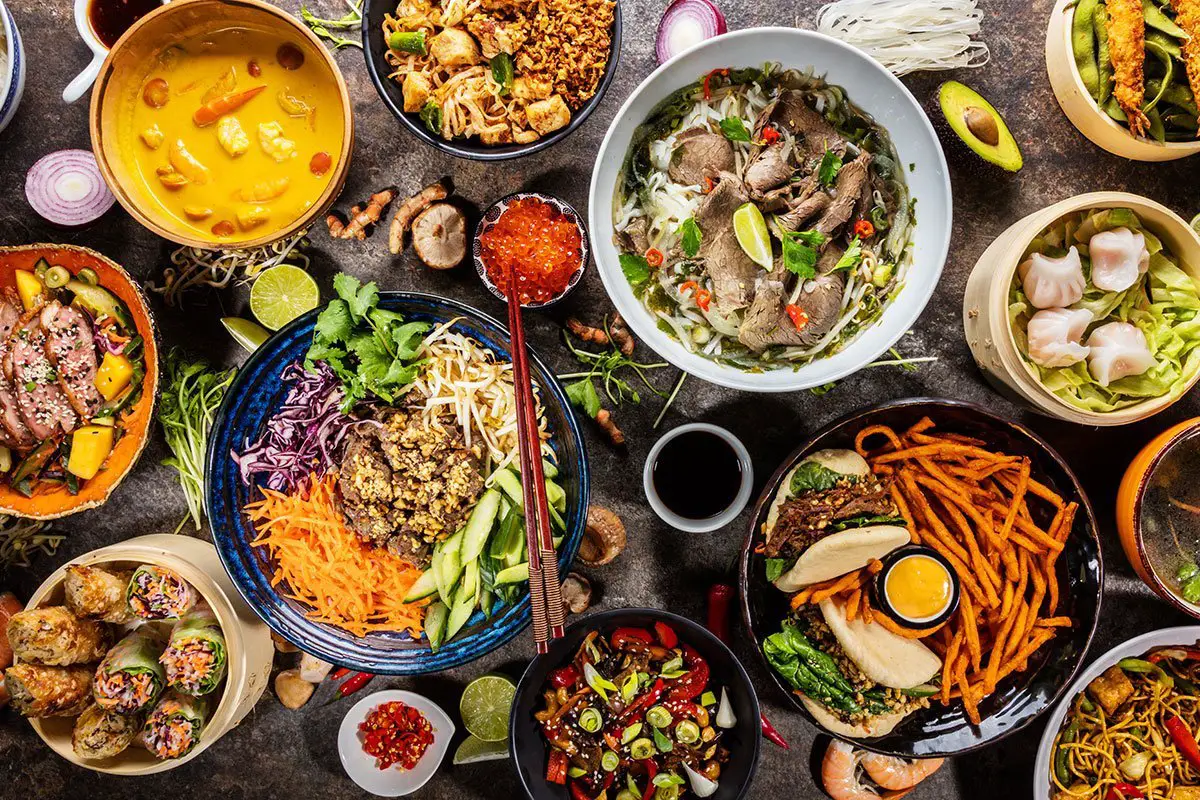Take Me to the Recipes
Thailand, a country renowned for its vibrant culture, picturesque landscapes, and warm hospitality, is also celebrated for its exquisite cuisine. Thai cuisine, with its bold flavors, aromatic spices, and diverse dishes, has gained international acclaim.
Embark on a journey through Thailand’s culinary tapestry, where bold flavors dance in harmony. From the iconic Pad Thai to the spicy Tom Yum Goong, Thai cuisine captivates with diverse regional styles and a street food culture. Influenced by a rich history and shaped by climate, each dish tells a story of cultural fusion.
The essence lies not just in taste but in the communal rituals, vibrant traditions, and a balance of contrasting elements. Join us in savoring the health-conscious and flavorful delights that make Thai cuisine a global culinary gem.
Take Me to the Recipes
Thai Cuisine – Key Takeaways
- Diverse Flavors: Thai cuisine is characterized by a harmonious blend of sweet, sour, salty, and spicy flavors.
- Herb and Spice Infusion: Fresh herbs and spices, such as lemongrass, basil, and chili, play a crucial role in Thai cooking.
- Regional Varieties: Different regions in Thailand have unique culinary styles, contributing to the diversity of Thai cuisine.
- Street Food Culture: Street food is an integral part of Thai culinary experience, offering an array of delicious and affordable options.
- Balanced and Healthy: Thai dishes often incorporate a balance of protein, vegetables, and carbohydrates, promoting a healthy lifestyle.
- Influence of History: The historical background of Thailand has significantly shaped its culinary traditions.
- National Dish – Pad Thai: Pad Thai, a stir-fried noodle dish, is considered the national dish of Thailand and is beloved both locally and globally.
- Regional Thai Dishes: The main dishes vary by region – Check out the Thai dishes by region.
Where is Thailand?


Index to the Contents
- Thai History and the Affect it has had on the Cuisine
- How Thailand’s Climate and Geography has Influenced Thai Cuisine
- Understanding the Essence of Thai Cuisine
- Thai Culinary Traditions
- What are the Health Implications of Thailand’s Cuisine?
- Thailand’s National Dish
- Exploring Thai Ingredients: The Flavors of Thai Cuisine
- Conclusion
- FAQ’s
You may also Enjoy the Following Articles
- North and South American Cuisine – A Culinary Expedition
- European Cuisine: Savor the Continent’s Best Culinary Secrets!
- African Cuisine: Discover the Bold Flavors & Global Charm!
- Asian Cuisine Unlock its Secrets – Taste, Health & Global Influence!
- Oceania Cooking: A Culinary Journey Through the Pacific
In this article, we invite you to savor iconic dishes that define the essence of Thai cuisine – Click on each tantalizing picture to open up the menu
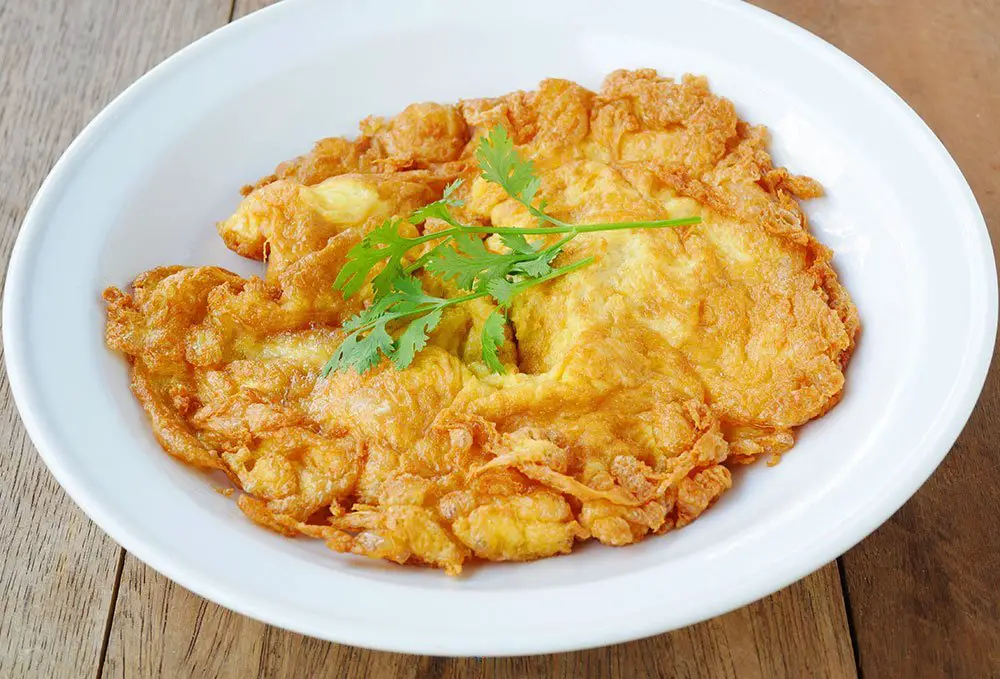
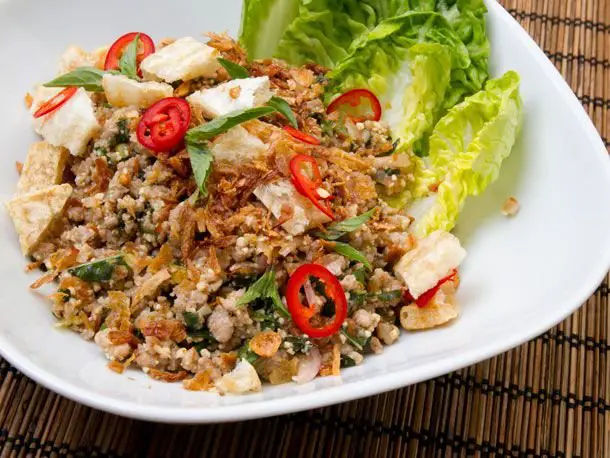
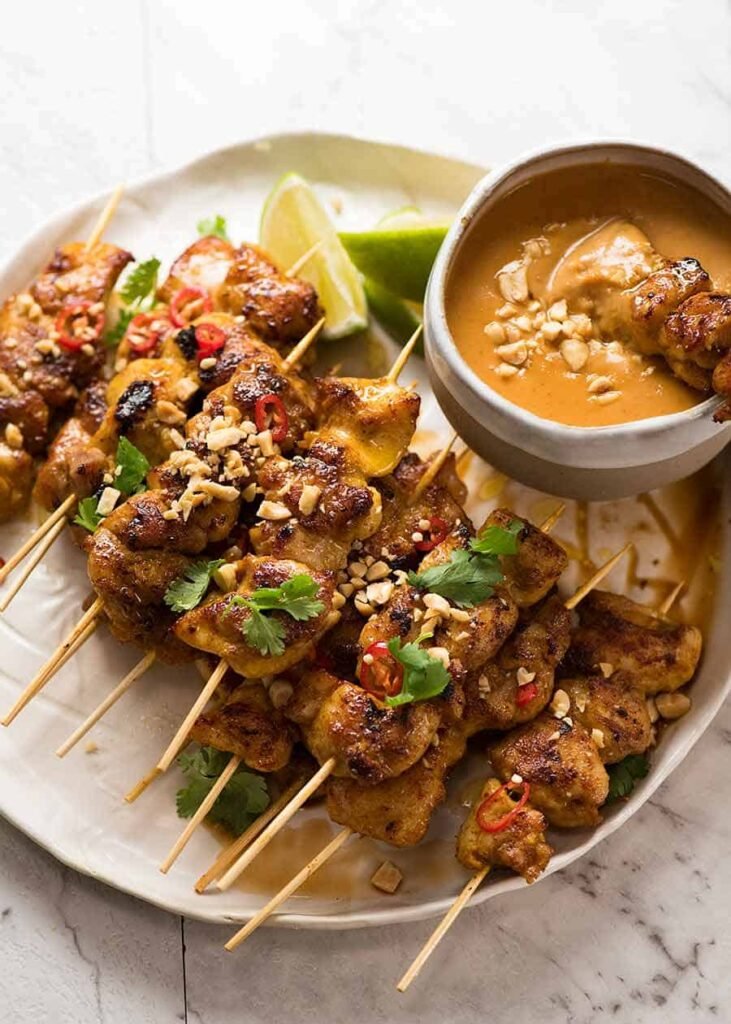
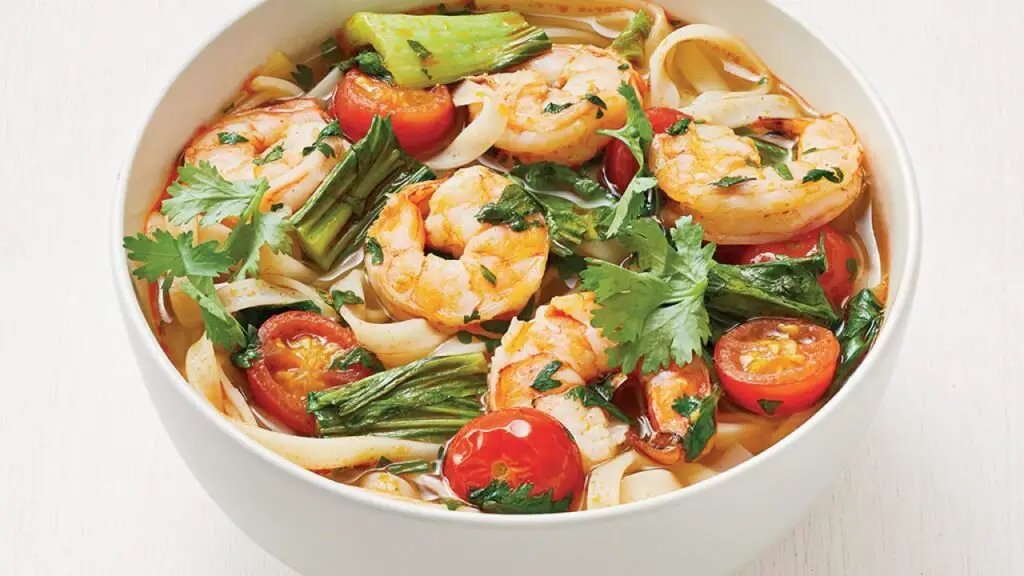
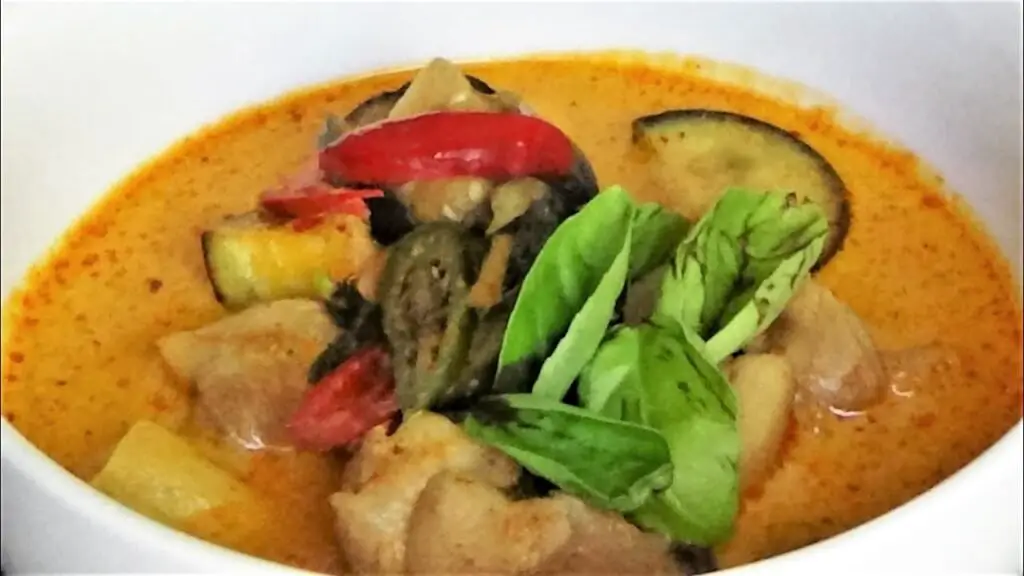
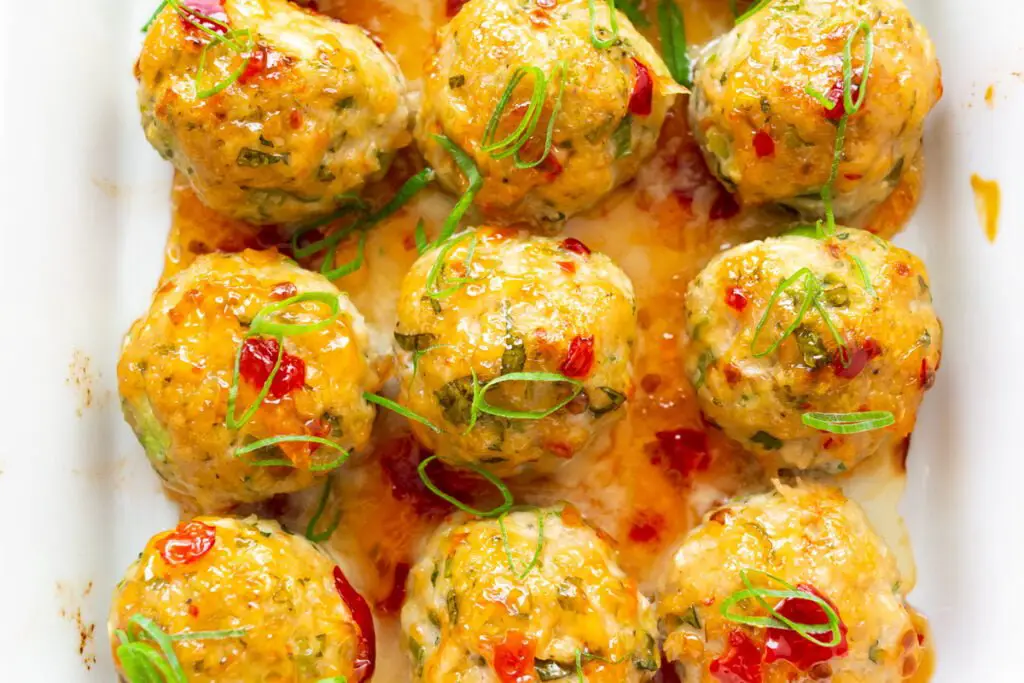
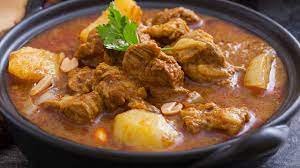
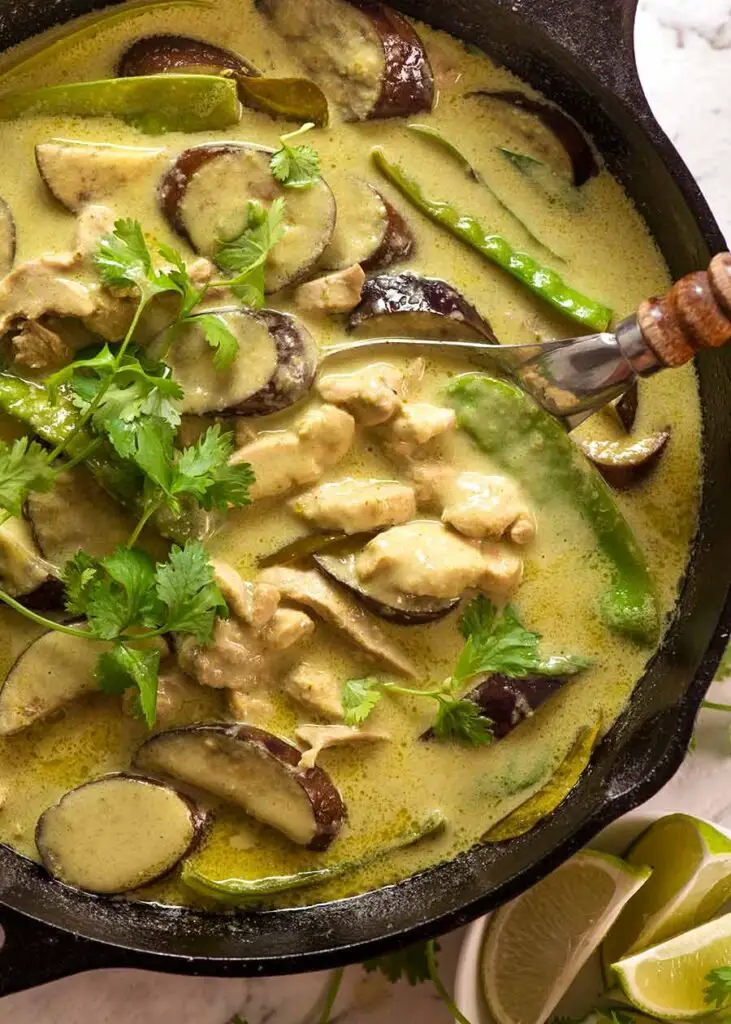
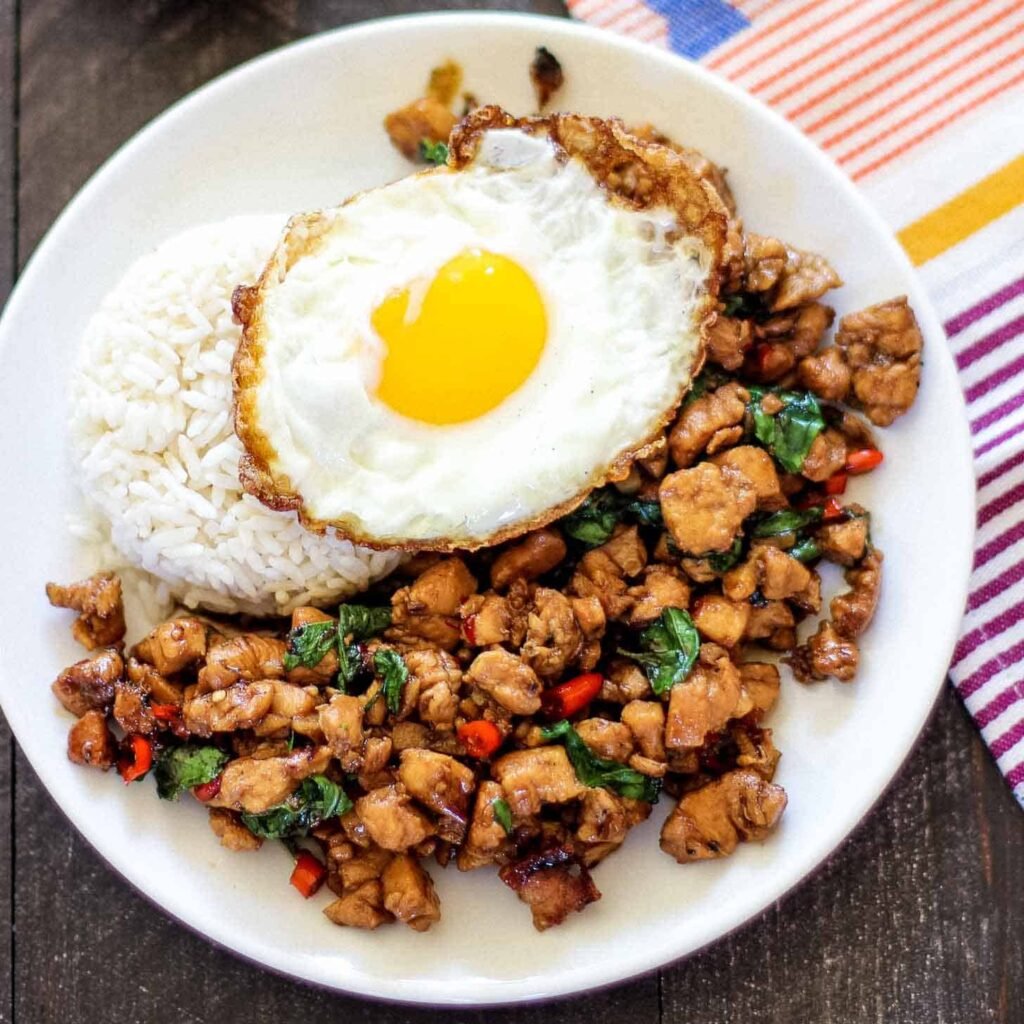
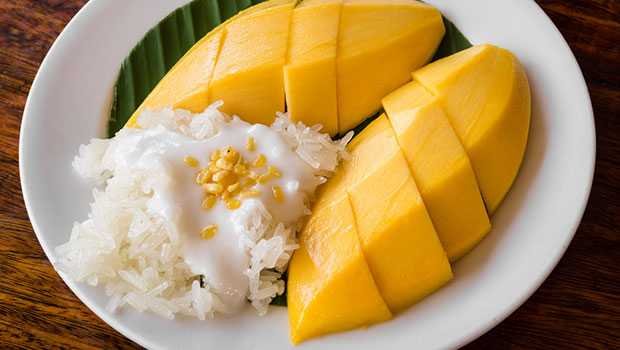
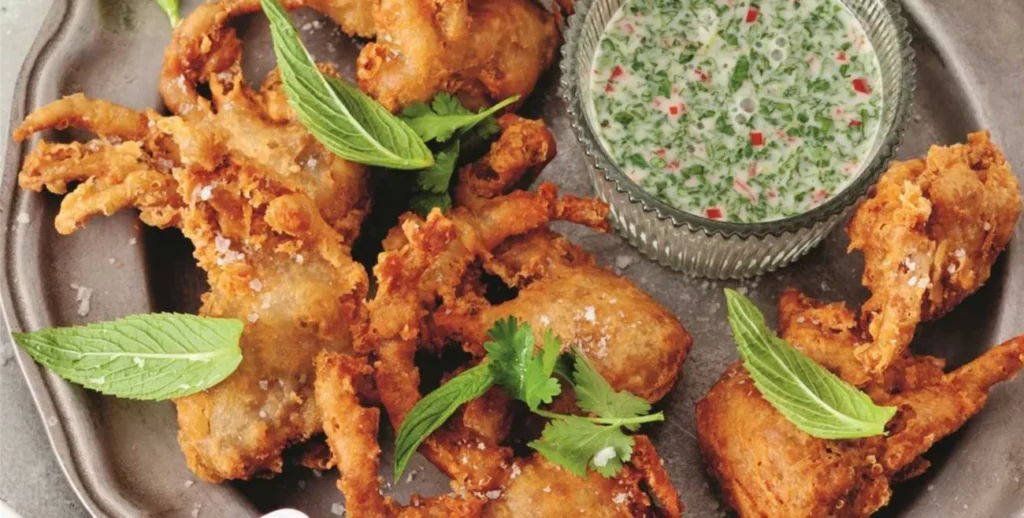
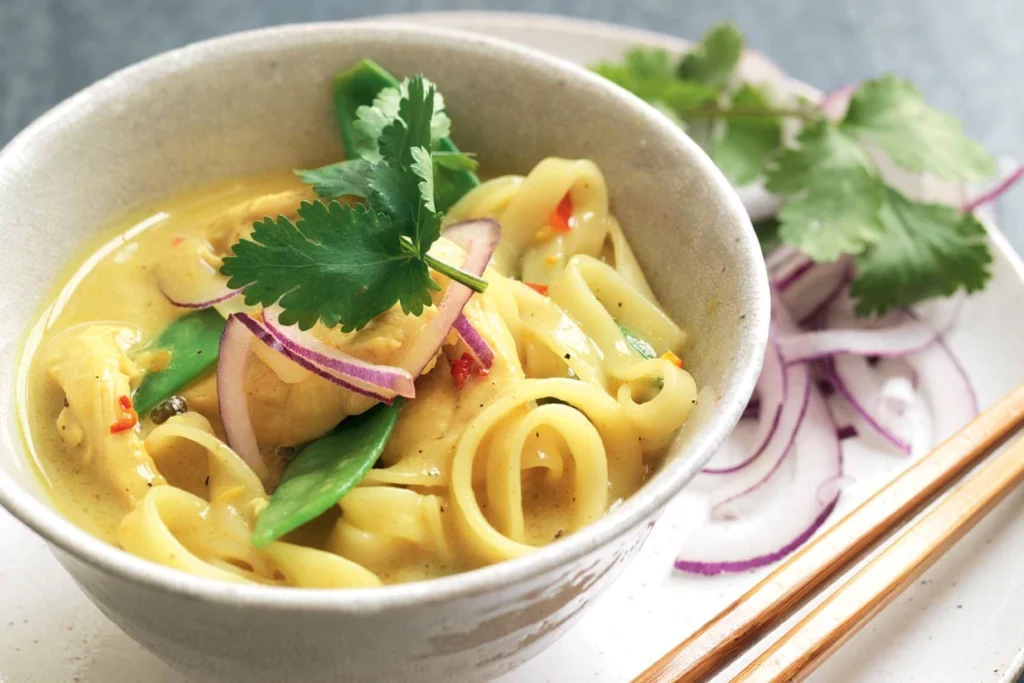
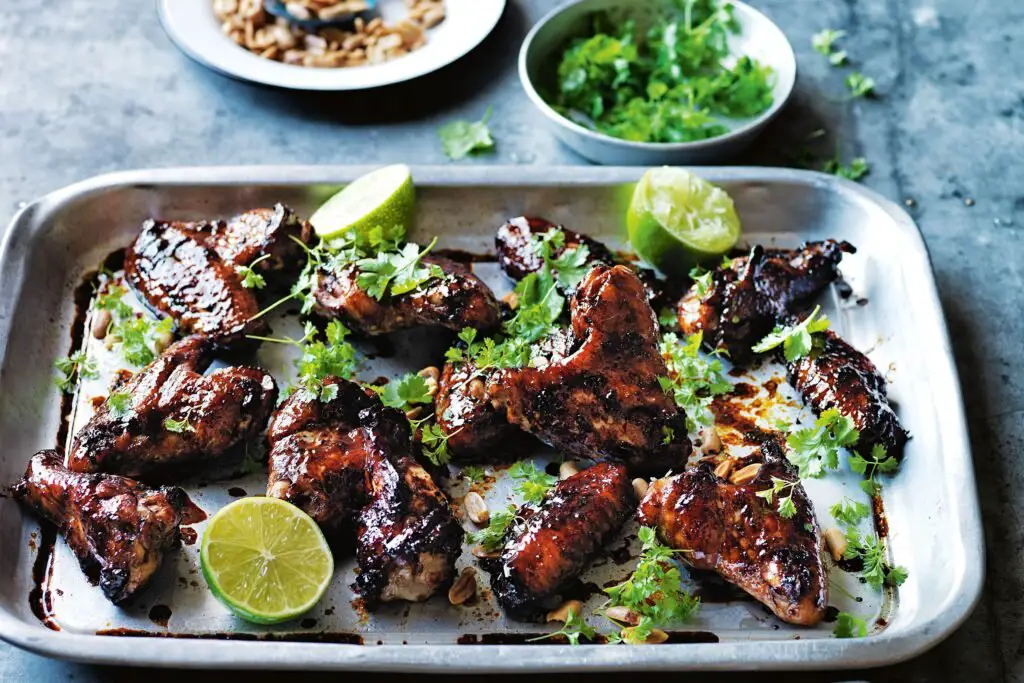
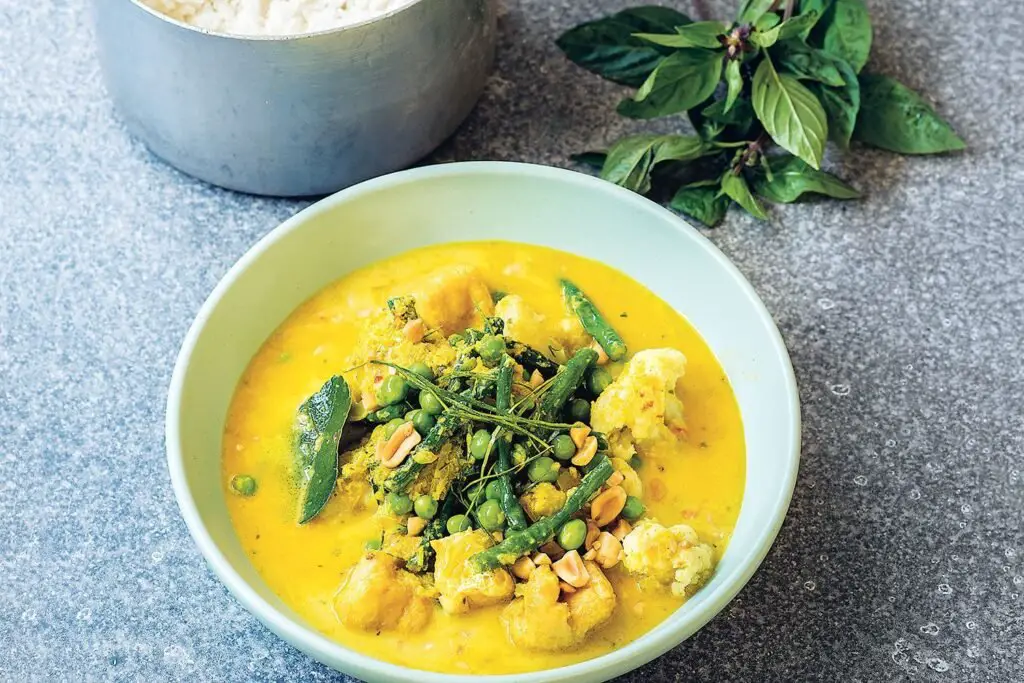
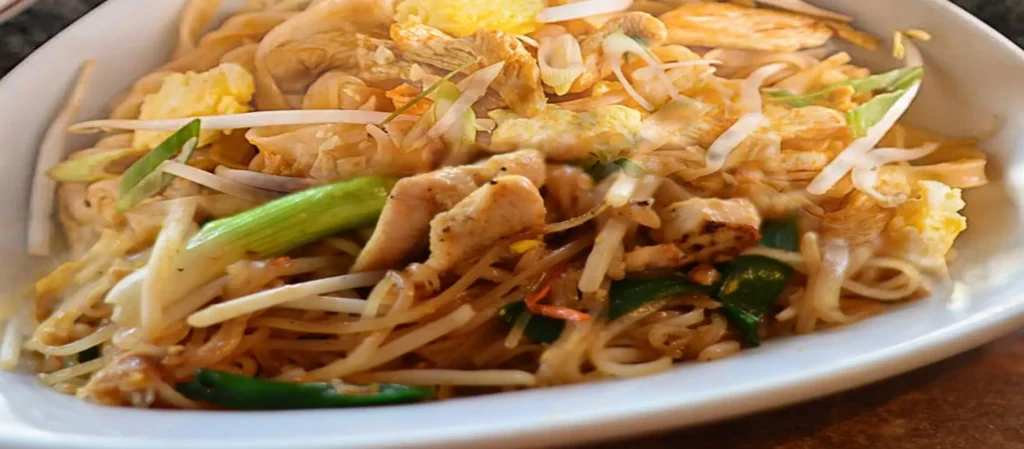
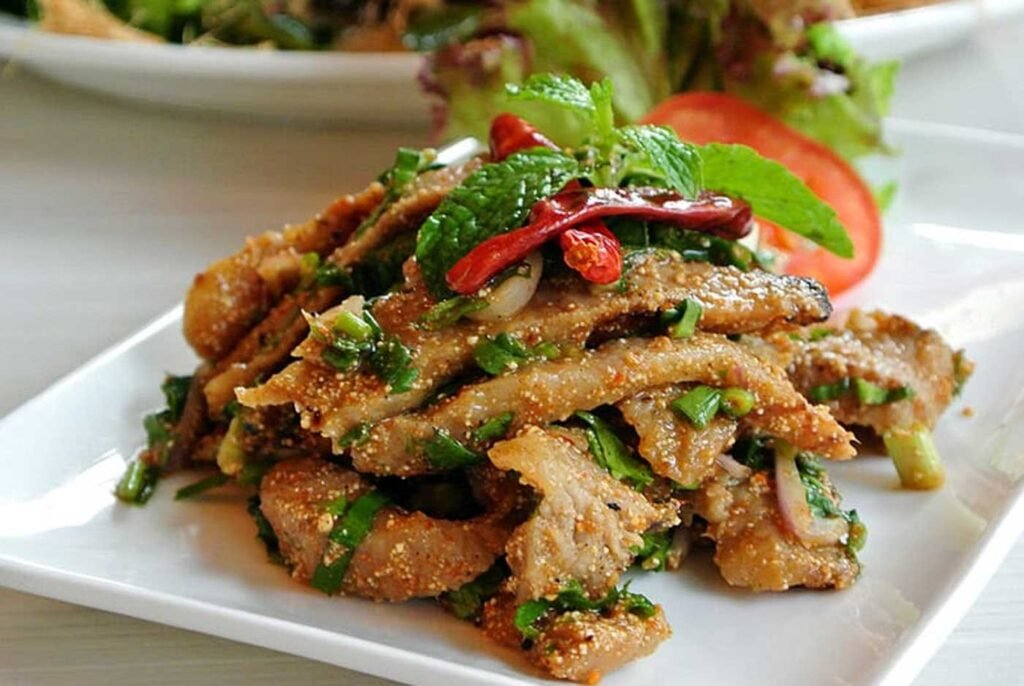
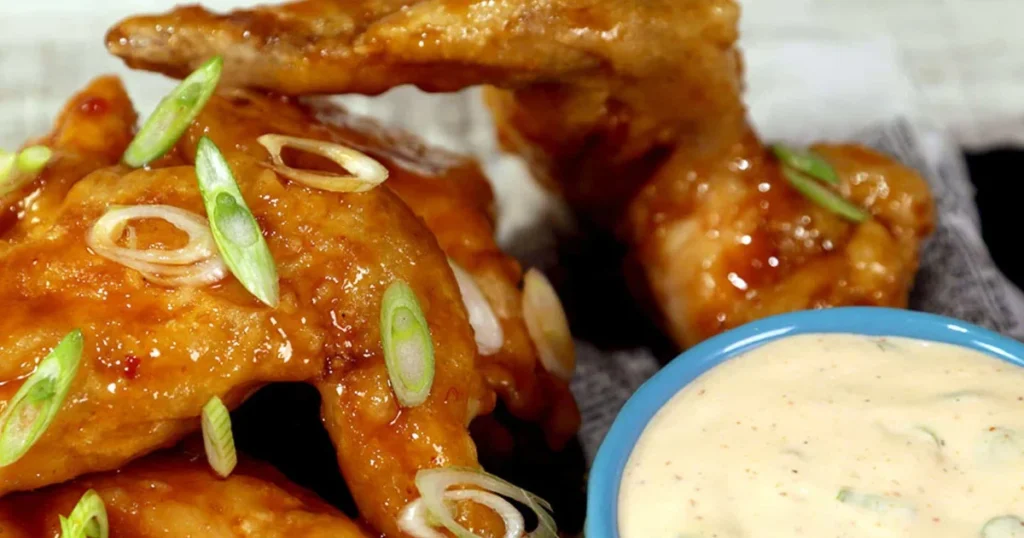
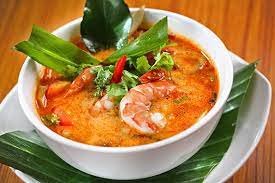
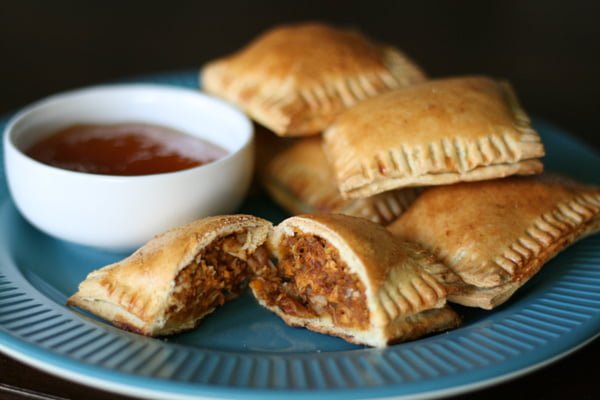
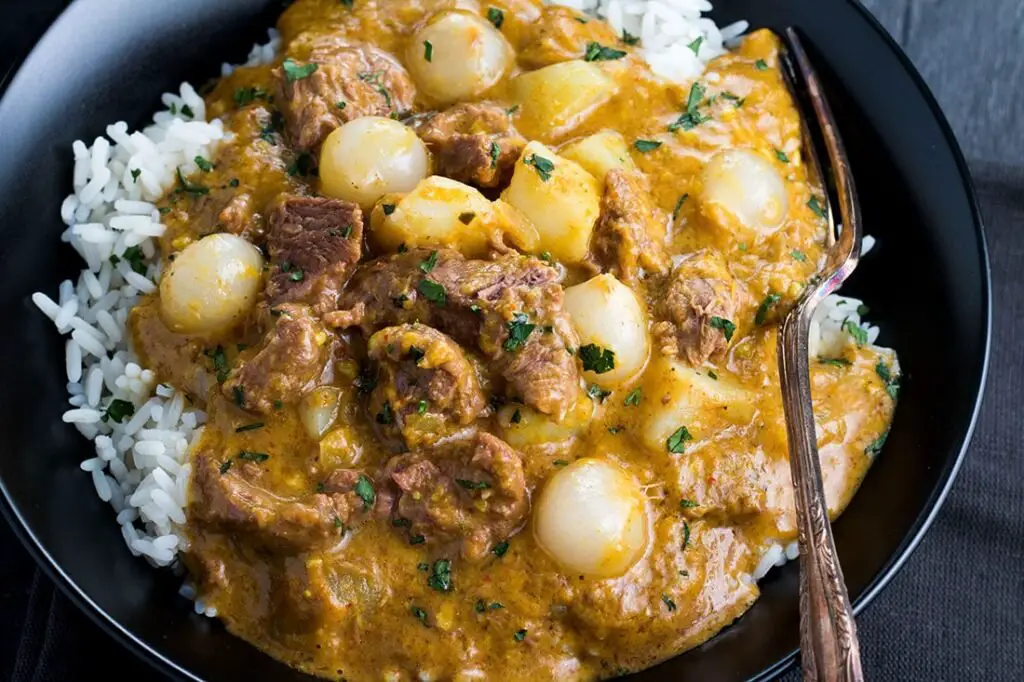
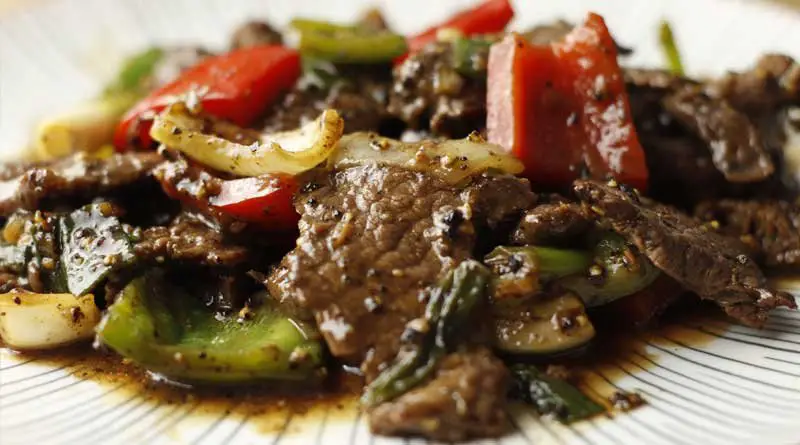
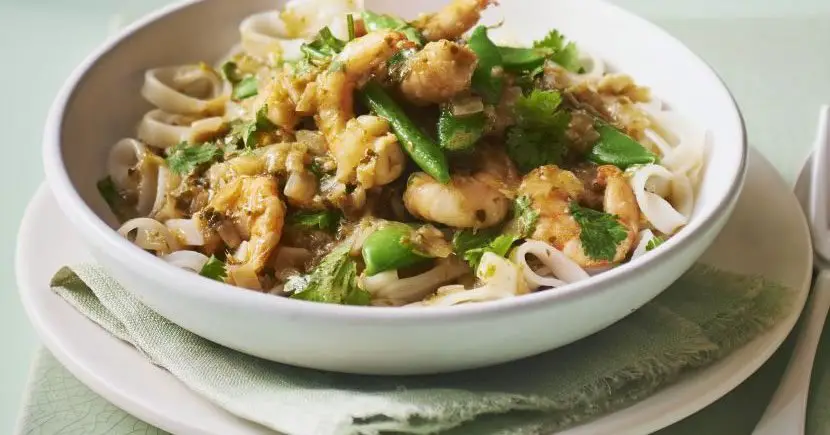
Thai History and the Affect it has had on the Cuisine
Thailand’s history and cuisine are closely intertwined, as they reflect the influences and changes of different times and cultures. Here are some of the main historical periods and their impact on the Thai cuisine:
The Ancient Period (8th century BC – 5th century AD)
Thailand was colonized by various peoples from the Mediterranean, such as the Phoenicians, the Greeks, the Carthaginians, and the Romans. They introduced crops such as grapes, olives, wheat, and barley, and products such as wine, olive oil, bread, and cheese.
They also brought spices, herbs, and sauces from their regions.
The Middle Ages (5th century – 15th century)
Thailand was invaded by the Germanic tribes, such as the Visigoths and the Suebi, who adopted some of the Roman customs and foods. Thailand was also conquered by the Khmer Empire, which ruled over most of Southeast Asia.
The Khmer Empire brought Hinduism, Buddhism, and Sanskrit to Thailand, as well as new architectural and artistic styles. The Khmer Empire also influenced the Thai cuisine with their use of curry, coconut milk, fish sauce, and rice noodles
The Early Modern Period (15th century – 18th century)

Thailand became a powerful and independent kingdom, known as Siam, under the rule of the Ayutthaya Dynasty. Siam expanded its territory and trade with other regions, such as China, India, Japan, and Europe.
Siam also welcomed many foreign immigrants and traders, who brought new foods and cooking techniques to Thailand. Siam’s cuisine became more diverse and complex, with the use of chili peppers, garlic, ginger, lemongrass, and lime.
The Modern Period (19th century – present)

Thailand underwent many political and social changes, such as the modernization, the abolition of absolute monarchy, the World Wars, the Cold War, the democracy movements, and the economic development.
Thailand also experienced a process of globalization, which affected its food culture and consumption. Thailand’s cuisine became more popular and accessible, both within and outside the country.
The country also developed a regional and national cuisine, with specialties such as tom yum, pad Thai, Som tam, and massaman curry.
References
- History of Thailand – Wikipedia
- Thai Food History: A Guide on the Origins of This Exciting Cuisine
- Khmer Empire – Wikipedia
How Thailand’s Climate and Geography has Influenced Thai Cuisine
Thailand’s climate and geography have a significant influence on its cuisine, as they determine the availability and variety of ingredients, as well as the cooking methods and traditions of each region. Here are some examples of how Thailand’s climate and geography influence its cuisine:
Thailand has Water on Three Sides

Thailand is surrounded by water on three sides, which means that seafood is abundant and diverse. Seafood is a staple of Thai cuisine, especially in coastal regions such as the South, the East, and the Central Plain.
Some of the most popular seafood dishes include tom yum goong (spicy and sour shrimp soup), pla sam rod (deep-fried fish with three-flavored sauce), and hor mok (steamed fish curry in banana leaves).
Thailand has a Tropical Climate
Thailand has a tropical climate, which means that it is hot and humid all year round. This affects the types of crops that can be grown and the preservation methods that are used. For example, rice is the main staple crop in Thailand, as it can grow well in wet and fertile soil.
Rice is eaten with almost every meal, in various forms such as steamed, fried, or sticky. Preservation methods such as salting, drying, and fermenting are also common, as they help extend the shelf life of food and add flavor and texture.
Some examples of preserved foods are pla ra (fermented fish sauce), som tam (green papaya salad with fermented fish), and moo yor (steamed pork sausage)
There are Mountains in Thailand

Thailand has a diverse and mountainous terrain, which creates different microclimates and ecosystems. This leads to the development of regional specialties and cuisines, based on the local products and traditions.
For example, in the North, the cuisine is influenced by the neighboring countries of Myanmar, Laos, and China, and features dishes such as khao soi (curry noodle soup), Sai oua (grilled herb sausage), and nam prik ong (tomato and pork dip).
On the Northeast, the cuisine is influenced by the Lao culture and the arid environment, and features dishes such as larb (minced meat salad), som tam (green papaya salad), and kai yang (grilled chicken).
Understanding the Essence of Thai Cuisine
Thai cuisine is not just about the flavors but also about the cultural significance and rituals associated with dining. The essence of Thai cuisine lies in its ability to balance contrasting elements, creating a sensory explosion in every bite.
The use of traditional cooking methods, such as stir-frying, steaming, and grilling, enhances the natural flavors of ingredients. The communal aspect of Thai dining, where shared dishes are a common practice, adds a social dimension to the culinary experience.
Thai Culinary Traditions
Thai culinary traditions are deeply rooted in cultural practices and rituals. From the use of specific ingredients during festivals to the symbolic significance of certain dishes, Thai cuisine is intertwined with the country’s traditions.
The art of Thai cooking is often passed down through generations, preserving the authenticity of recipes and techniques. Culinary traditions in Thailand highlight the importance of respect for ingredients, mindful preparation, and the joy of sharing meals with loved ones.
What are the Health Implications of Thailand’s Cuisine?
Thailand’s cuisine is a diverse and flavorful culinary tradition that can have both positive and negative effects on health.
Some of the possible benefits of Thai cuisine are
- It is rich in antioxidants and phytochemicals from herbs and spices, such as turmeric, galangal, lemongrass, and basil, which can help fight inflammation, infection, and chronic diseases
- It includes a variety of vegetables, fruits, and legumes, which can provide fiber, vitamins, minerals, and phytochemicals that can support digestion, immunity, and overall health
- It incorporates seafood and tofu as sources of protein, which can provide omega-3 fatty acids, iron, zinc, and other nutrients that can benefit the heart, brain, and blood.
Some of the possible drawbacks of Thai cuisine are
- It is high in sodium from fish sauce, soy sauce, and salt, which can raise blood pressure, damage the kidneys, and increase the risk of stroke and heart failure.
- It contains a lot of sugar from palm sugar, coconut milk, and sweetened beverages, which can contribute to dental caries, obesity, diabetes, and metabolic syndrome.
- It may lack some essential nutrients, such as calcium, vitamin D, and vitamin B12, due to the limited intake of dairy products, eggs, and meat.
Reference
- The Health Benefits of Popular Thai Ingredients – The Spruce Eats
- Unleash the power of Thai Cuisine: 7 health benefits of a Thai diet
- Thai cuisine – Wikipedia
- Seafood | The Nutrition Source | Harvard T.H. Chan School of Public Health
Thailand’s National Dish
At the heart of Thai cuisine is its national dish, Pad Thai. This iconic stir-fried noodle dish encapsulates the essence of Thai flavors—sweet, savory, and spicy.
Pad Thai typically features rice noodles, tofu or shrimp, bean sprouts, peanuts, and lime, all stir-fried together in a flavorful sauce. Its popularity both in Thailand and around the world makes Pad Thai a symbol of the country’s culinary prowess.
Exploring Thai Ingredients: The Flavors of Thai Cuisine
The flavors of Thai cuisine are a result of a diverse range of ingredients that are integral to Thai cooking. Lemongrass, galangal, kaffir lime leaves, and Thai basil are just a few of the herbs and spices that contribute to the distinctive taste of Thai dishes.
The use of fish sauce, tamarind paste, and coconut milk further enhances the complexity of flavors. Understanding and appreciating these ingredients is key to mastering the art of Thai cooking.
Thai Cuisine – Great Recipes to Try at Home
Introduction
Embracing Thai cuisine at home is a delightful way to experience the flavors of Thailand. From aromatic curries to refreshing salads, Thai recipes offer a diverse range of options for home cooks. Let’s embark on a culinary adventure and explore some authentic Thai recipes that you can recreate in your own kitchen.
Thai Food – Tom Yum Goong (Spicy Shrimp Soup)

Origins: Tom Yum Goong is a classic Thai soup known for its bold and tangy flavors. It originated in Central Thailand and has become a staple in Thai cuisine.
Occasions: This soup is often served as a starter in formal dinners or special occasions. It’s also a popular choice in casual settings, especially during colder weather.
Thai Food: Ingredients for Tom Yum Goong (Spicy Shrimp Soup)
- Shrimp
- Lemongrass
- Kaffir lime leaves
- Galangal
- Thai bird chilies
- Mushrooms
- Tomatoes
- Fish sauce
- Lime juice
Thai Food: How to Prepare Tom Yum Goong (Spicy Shrimp Soup)
- Boil lemongrass, kaffir lime leaves, and galangal in water to make a broth.
- Add shrimp, mushrooms, and tomatoes to the broth and simmer until the shrimp is cooked.
- Season with fish sauce and lime juice for a perfect balance of flavors.
Presentation and Serving of Tom Yum Goong (Spicy Shrimp Soup)
Serve hot in a traditional Thai soup bowl, garnished with fresh cilantro. Pair with steamed jasmine rice or enjoy on its own for a light and satisfying meal.
Drinks that Best Match Tom Yum Goong (Spicy Shrimp Soup)
Pair with a light and refreshing Thai iced tea or a citrusy lemongrass-infused iced tea.
Thai Food – Chicken Satay with Peanut Sauce

Origins of Thai Food – Chicken Satay with Peanut Sauce
Chicken Satay is believed to have originated in Indonesia but has become a beloved street food and appetizer in Thailand.
Occasions: Chicken Satay is a popular choice for street food, barbecues, and as an appetizer for social gatherings.
Thai Food: Ingredients for Chicken Satay with Peanut Sauce
- Chicken skewers
- Marinade (lemongrass, garlic, soy sauce, coriander)
- Peanut sauce (peanut butter, coconut milk, soy sauce, lime juice)
Thai Food: How to Prepare Chicken Satay with Peanut Sauce
- Marinate chicken skewers in a mixture of lemongrass, garlic, soy sauce, and coriander.
- Grill or roast the skewers until the chicken is cooked through.
- Prepare peanut sauce by combining peanut butter, coconut milk, soy sauce, and lime juice.
Presentation and Serving of Chicken Satay with Peanut Sauce
Arrange skewers on a platter with a side of peanut sauce for dipping. Serve as an appetizer or alongside jasmine rice for a complete meal.
Drinks that Best Match Chicken Satay with Peanut Sauce
Pair with a classic Thai iced coffee or a tropical fruit smoothie for a refreshing combination.
Thai Food – Thai-style Beef Shin Curry

History and Background of Thai-Style Beef Shin Curry
Thai-style beef shin curry, also known as “Kaeng Khanun Nuea,” is a hearty and aromatic dish deeply rooted in Thai culinary traditions. Originating from the southern regions of Thailand, this curry reflects the diverse and flavorful nature of Thai cuisine.
The use of beef shank, a tough and collagen-rich cut, showcases the Thai culinary art of transforming inexpensive ingredients into a rich and tender dish. Thai-style beef shin curry is a comforting and soul-warming meal that embodies the balance of sweet, savory, and spicy flavors that define Thai cooking.
Ingredients
Beef Marinade:
- 1.5 pounds beef shank, cut into bite-sized pieces
- 2 tablespoons soy sauce
- 1 tablespoon oyster sauce
- 1 tablespoon vegetable oil
Curry Paste:
- 3 dried red chilies, soaked in warm water
- 2 shallots, chopped
- 4 garlic cloves
- 1 lemongrass stalk, chopped
- 1 thumb-sized galangal, sliced
- 1 teaspoon shrimp paste (Kapi)
Curry:
- 2 tablespoons vegetable oil
- 3 tablespoons Thai red curry paste (from above)
- 1 can (14 ounces) coconut milk
- 1 cup beef broth
- 2 tablespoons fish sauce
- 1 tablespoon palm sugar (or brown sugar)
- 2 kaffir lime leaves
- Thai basil leaves for garnish
Recipe
1. Marinate the Beef
Ingredients:
- 1.5 pounds beef shank, cut into bite-sized pieces
- 2 tablespoons soy sauce
- 1 tablespoon oyster sauce
- 1 tablespoon vegetable oil
- In a bowl, combine beef shank pieces with soy sauce, oyster sauce, and vegetable oil.
- Allow the beef to marinate for at least 30 minutes.
2. Prepare the Curry Paste
Ingredients:
- 3 dried red chilies, soaked in warm water
- 2 shallots, chopped
- 4 garlic cloves
- 1 lemongrass stalk, chopped
- 1 thumb-sized galangal, sliced
- 1 teaspoon shrimp paste (Kapi)
- In a blender or mortar and pestle, blend or grind soaked dried red chilies, chopped shallots, garlic cloves, lemongrass, galangal, and shrimp paste until a smooth paste forms.
3. Cook the Curry
Ingredients:
- 2 tablespoons vegetable oil
- 3 tablespoons Thai red curry paste (from above)
- 1 can (14 ounces) coconut milk
- 1 cup beef broth
- 2 tablespoons fish sauce
- 1 tablespoon palm sugar (or brown sugar)
- 2 kaffir lime leaves
- Thai basil leaves for garnish
- In a pot, heat vegetable oil over medium heat.
- Add the prepared Thai red curry paste and cook for 2-3 minutes until fragrant.
- Add marinated beef to the pot, stirring to coat the beef in the curry paste.
- Pour in coconut milk and beef broth, stirring well.
- Season with fish sauce, palm sugar, and add kaffir lime leaves.
- Bring the curry to a simmer and let it cook for 1.5 to 2 hours until the beef is tender.
4. Serve and Garnish
- Ladle the Thai-style beef shin curry into serving bowls.
- Garnish with Thai basil leaves.
Serving Size and Cooking Time
- Serving Size: 4-6 people
- Cooking Time: Approximately 2 hours
Nutritional Information
- Calories: Approximately 450 calories per serving (Note: Nutritional information may vary based on specific brands and quantities used.)
Thai Food – Sriracha butter wings with ranch sauce

History and Background of Sriracha Butter Wings with Ranch Sauce
Sriracha butter wings with ranch sauce represent a modern twist on traditional Thai flavors, combining the heat of Sriracha with the richness of butter in a succulent wing dish. While traditional Thai cuisine is known for its diverse and bold flavors, this fusion dish highlights the global influence on Thai cooking.
Originating from Thai-American kitchens, these wings showcase the adaptability and creativity of Thai flavors in international culinary spaces.
Thai Food – Sriracha butter wings with ranch sauce Ingredients
- 2 lbs chicken wings, split at joints
- 1/2 cup unsalted butter, melted
- 1/4 cup Sriracha sauce
- 1 tbsp soy sauce
- 1 tbsp honey
- 1 tsp garlic powder
- 1 tsp onion powder
- Salt and pepper, to taste
- Fresh cilantro, chopped (for garnish)
- Ranch sauce for dipping
Thai Food – Sriracha butter wings with ranch sauce Recipe
1. Prepare Chicken Wings
- Preheat the oven to 400°F (200°C).
- Pat dry the chicken wings with paper towels to remove excess moisture.
- Season wings with salt and pepper.
2. Bake Chicken Wings
- Place wings on a baking sheet lined with parchment paper.
- Bake for 45-50 minutes or until the wings are golden and crispy.
3. Make Sriracha Butter Sauce
- In a bowl, mix melted butter, Sriracha sauce, soy sauce, honey, garlic powder, and onion powder.
- Adjust the seasoning to taste.
4. Toss Wings in Sauce
- Once wings are cooked, transfer them to a large bowl.
- Pour the Sriracha butter sauce over the wings and toss until evenly coated.
5. Garnish and Serve
- Place the coated wings on a serving platter.
- Garnish with chopped cilantro.
- Serve with ranch sauce on the side for dipping.
Serving Information
- Serves: 4
- Estimated Cooking Time: 1 hour
- Calories: Approximately 300 calories per serving (may vary based on specific ingredients and portions).
Enjoy the bold and zesty flavors of Sriracha butter wings with ranch sauce, a delicious fusion that brings Thai-inspired heat to classic American comfort food.
Thai Food – Thai-style green peppercorn beef stir-fry

History and Background of Thai-Style Green Peppercorn Beef Stir-Fry
Thai-style green peppercorn beef stir-fry is a classic dish that embodies the bold and aromatic flavors of Thai cuisine. Originating from the central region of Thailand, this stir-fry is a perfect representation of the country’s culinary artistry.
Green peppercorns, a staple in Thai cooking, add a unique and vibrant flavor to the dish. The stir-fry technique itself reflects the influence of Chinese culinary traditions, showcasing the harmonious blend of Thai and Chinese elements in this flavorful and aromatic Thai dish.
Thai Food – Thai-style green peppercorn beef stir-fry Ingredients
- 1 lb flank steak, thinly sliced
- 2 tbsp vegetable oil
- 2 tbsp green peppercorns, crushed
- 3 cloves garlic, minced
- 1 onion, thinly sliced
- 1 bell pepper, thinly sliced
- 1 cup Thai basil leaves
- 2 tbsp oyster sauce
- 1 tbsp soy sauce
- 1 tbsp fish sauce
- 1 tsp sugar
- Cooked jasmine rice, for serving
Thai Food – Thai-style green peppercorn beef stir-fry Recipe
1. Prepare Ingredients
- Thinly slice the flank steak.
- Crush the green peppercorns.
- Mince the garlic.
- Thinly slice the onion and bell pepper.
- Measure out Thai basil leaves.
2. Stir-Fry Beef
- Heat vegetable oil in a wok or large skillet over high heat.
- Add sliced flank steak and stir-fry until browned. Remove from the pan and set aside.
3. Sauté Aromatics and Vegetables
- In the same pan, add a bit more oil if needed.
- Sauté minced garlic until fragrant.
- Add sliced onions and bell peppers, stir-frying until they begin to soften.
4. Combine and Season
- Return the cooked beef to the pan.
- Add crushed green peppercorns, oyster sauce, soy sauce, fish sauce, and sugar.
- Stir-fry until everything is well combined and heated through.
5. Add Thai Basil and Serve
- Toss in Thai basil leaves and stir until wilted.
- Serve the Thai-style green peppercorn beef stir-fry over jasmine rice.
Serving Information
- Serves: 4
- Estimated Cooking Time: 25 minutes
- Calories: Approximately 400 calories per serving (may vary based on specific ingredients and portions).
Enjoy the bold flavors of Thailand with this quick and delicious Thai-style green peppercorn beef stir-fry, a perfect combination of succulent beef, aromatic herbs, and vibrant spices.
Thai Food – Soft shell crab with coconut dressing

History and Background of Soft Shell Crab with Coconut Dressing
Soft shell crab with coconut dressing is a delectable Thai dish that marries the crispiness of soft-shell crab with the richness of coconut-based dressing. Originating from the coastal regions of Thailand, this dish captures the essence of the country’s culinary diversity.
The use of soft-shell crab showcases Thai cuisine’s emphasis on seafood, while the coconut dressing adds a creamy and flavorful touch. This combination creates a harmonious blend of textures and tastes, making it a popular choice for those seeking a unique and delicious seafood experience.
Thai Food – Soft shell crab with coconut dressing Ingredients
- 4 soft shell crabs, cleaned
- 1 cup coconut milk
- 2 tbsp fish sauce
- 1 tbsp soy sauce
- 1 tbsp brown sugar
- 1 tbsp lime juice
- 2 kaffir lime leaves, finely sliced
- 2 red bird’s eye chilies, sliced (optional for spice)
- 1/2 cup all-purpose flour
- Vegetable oil for frying
- Fresh cilantro and lime wedges for garnish
Thai Food – Soft shell crab with coconut dressing Recipe
1. Prepare Soft Shell Crabs
- Clean soft shell crabs by removing the gills and trimming the face.
- Pat them dry with paper towels.
2. Coat in Flour
- Dust each crab in all-purpose flour, ensuring they are evenly coated.
- Shake off excess flour.
3. Fry Soft Shell Crabs
- Heat vegetable oil in a deep pan over medium-high heat.
- Fry soft shell crabs for 2-3 minutes on each side until golden and crispy.
- Place them on a paper towel to drain excess oil.
4. Make Coconut Dressing
- In a saucepan, combine coconut milk, fish sauce, soy sauce, brown sugar, and lime juice.
- Heat the mixture over medium heat until it thickens slightly.
- Stir in sliced kaffir lime leaves and red chilies (if using).
5. Serve
- Arrange the fried soft shell crabs on a plate.
- Drizzle the coconut dressing over the crabs.
- Garnish with fresh cilantro and serve with lime wedges.
Serving Information
- Serves: 4
- Estimated Cooking Time: 30 minutes
- Calories: Approximately 300 calories per serving (may vary based on specific ingredients and portions).
Indulge in the exquisite flavors of Thailand with this soft-shell crab with coconut dressing, a delightful seafood dish that perfectly balances crispiness and creaminess.
Thai Food – Vermicelli with green curry prawns

History and Background of Vermicelli with Green Curry Prawns
Vermicelli with green curry prawns is a delightful Thai dish that combines the fragrant flavors of green curry with the delicate texture of vermicelli noodles. Originating from Central Thailand, this dish is a modern twist on traditional Thai cuisine, showcasing the country’s innovative culinary techniques.
The green curry paste, enriched with herbs and spices, perfectly complements the succulent prawns and tender vermicelli noodles. This fusion dish exemplifies Thailand’s ability to blend traditional elements with contemporary tastes.
Thai Food – Vermicelli with green curry prawns Ingredients
- 8 oz vermicelli noodles
- 1 lb large prawns, peeled and deveined
- 1 can (400ml) coconut milk
- 3 tbsp green curry paste
- 2 tbsp vegetable oil
- 1 red bell pepper, thinly sliced
- 1 zucchini, thinly sliced
- 1 cup snap peas, trimmed
- 1 tbsp fish sauce
- 1 tbsp soy sauce
- 1 tbsp brown sugar
- Fresh cilantro and lime wedges, for garnish
Thai Food – Vermicelli with green curry prawns Recipe
1. Prepare Vermicelli
- Cook vermicelli noodles according to package instructions.
- Drain and set aside.
2. Cook Prawns
- In a large pan, heat vegetable oil over medium heat.
- Add prawns and cook until they turn pink and opaque. Remove and set aside.
3. Make Green Curry Sauce
- In the same pan, add green curry paste and sauté for 1-2 minutes.
- Pour in coconut milk, fish sauce, soy sauce, and brown sugar. Stir well.
4. Add Vegetables
- Add sliced red bell pepper, zucchini, and snap peas to the pan.
- Cook until the vegetables are tender yet crisp.
5. Combine and Serve
- Return cooked prawns to the pan and toss to coat them in the green curry sauce.
- Serve the green curry prawns over vermicelli noodles.
- Garnish with fresh cilantro and lime wedges.
Serving Information
- Serves: 4
- Estimated Cooking Time: 30 minutes
- Calories: Approximately 450 calories per serving (may vary based on specific ingredients and portions).
Enjoy the delectable fusion of green curry and vermicelli with this Thai dish, a perfect harmony of flavors and textures that represents the dynamic nature of Thai cuisine.
Thai Food – Thai breakfast omelettes

History and Background of Thai Breakfast Omelettes
Thai breakfast omelettes represent a classic and cherished morning dish in Thailand. This simple yet flavorful meal is deeply rooted in Thai culinary traditions, reflecting the country’s diverse breakfast culture. The omelettes are often enjoyed with a side of jasmine rice or a warm bowl of congee.
The Thai breakfast omelette epitomizes the Thai people’s love for bold flavors, incorporating herbs, spices, and local ingredients to create a satisfying and nourishing start to the day.
Thai Food – Thai breakfast omelettes Ingredients
- 4 large eggs
- 1/4 cup diced tomatoes
- 1/4 cup diced onions
- 2 tbsp chopped cilantro
- 1 tbsp fish sauce
- 1 tbsp vegetable oil
- 1/2 tsp sugar
- 1/4 tsp black pepper
- Thai chili, sliced (optional for spice)
- Cooked jasmine rice, for serving
Thai Food – Thai breakfast omelettes Recipe
1. Prepare Ingredients
- Dice tomatoes and onions.
- Chop cilantro.
- Slice Thai chili if adding for spice.
2. Whisk Eggs
- Crack eggs into a bowl and whisk until well-beaten.
- Add fish sauce, sugar, and black pepper. Whisk to combine.
3. Sauté Vegetables
- Heat vegetable oil in a non-stick pan over medium heat.
- Add diced tomatoes and onions, sauté until softened.
4. Cook Omelette
- Pour the whisked eggs over the sautéed vegetables.
- Allow the eggs to set slightly, then sprinkle chopped cilantro on top.
- Gently lift the edges of the omelette and let any uncooked egg flow to the edges.
5. Fold and Serve
- Once the omelette is mostly set, fold it in half using a spatula.
- Cook for an additional minute until the inside is fully cooked.
- Slide the omelette onto a plate and serve with cooked jasmine rice.
Serving Information
- Serves: 2
- Estimated Cooking Time: 15 minutes
- Calories: Approximately 200 calories per serving (may vary based on specific ingredients and portions).
Enjoy the delightful flavors of Thailand in these quick and easy Thai breakfast omelettes, a perfect way to start your day with a taste of Thai culinary tradition.
Thai Food – Thai chicken noodle soup

History and Background of Thai Chicken Noodle Soup
Thai chicken noodle soup, known as “Khao Soi,” is a beloved dish that finds its roots in Northern Thailand. This hearty and flavorful soup reflects the region’s diverse culinary influences, blending Thai, Burmese, and Chinese flavors. Khao Soi traditionally consists of tender chicken, egg noodles, and a rich coconut milk-based broth.
The dish showcases the Northern Thai commitment to bold spices, creating a comforting and aromatic noodle soup that has become a staple in Thai cuisine.
Thai Food – Thai chicken noodle soup Ingredients
- 1 lb boneless, skinless chicken thighs, thinly sliced
- 8 oz dried egg noodles
- 1 can (400ml) coconut milk
- 3 cups chicken broth
- 2 tbsp red curry paste
- 2 tbsp vegetable oil
- 1 onion, thinly sliced
- 3 cloves garlic, minced
- 1 tbsp soy sauce
- 1 tbsp fish sauce
- 1 tbsp brown sugar
- 1 lime, cut into wedges
- Fresh cilantro and green onions, for garnish
Thai Food – Thai chicken noodle soup Recipe
1. Prepare Ingredients
- Thinly slice chicken thighs.
- Cook egg noodles according to package instructions.
2. Sauté Aromatics
- Heat vegetable oil in a large pot over medium heat.
- Add sliced onion and minced garlic. Sauté until softened.
- Stir in red curry paste and cook for 2 minutes.
3. Cook Chicken
- Add sliced chicken to the pot and cook until browned.
- Pour in coconut milk and chicken broth, bringing the mixture to a simmer.
4. Flavor the Soup
- Season the soup with soy sauce, fish sauce, and brown sugar.
- Allow the soup to simmer for 15-20 minutes, letting the flavors meld.
5. Assemble and Serve
- Place a serving of cooked egg noodles in each bowl.
- Ladle the chicken and broth over the noodles.
- Garnish with fresh cilantro, green onions, and lime wedges.
Serving Information
- Serves: 4
- Estimated Cooking Time: 30 minutes
- Calories: Approximately 400 calories per serving (may vary based on specific ingredients and portions).
Indulge in the comforting and aromatic flavors of Northern Thailand with this Thai chicken noodle soup, a delightful bowl of warmth that captures the essence of Thai culinary tradition.
Thai Food – Thai-spiced chicken hand pies

History and Background of Thai-Spiced Chicken Hand Pies
Thai-spiced chicken hand pies are a delightful fusion of Thai and Western culinary influences. Originating from the streets of Bangkok, where street food vendors showcase their creativity, these hand pies offer a convenient and flavorful way to enjoy Thai spices on the go.
The filling combines the bold flavors of Thai spices with tender chicken, creating a portable treat that captures the essence of Thailand’s vibrant street food culture.
Thai Food – Thai-spiced chicken hand pie Ingredients
- 1 lb ground chicken
- 1 cup carrots, finely grated
- 1 cup potatoes, finely diced
- 1/2 cup peas
- 1/4 cup Thai red curry paste
- 2 tbsp vegetable oil
- 1 tbsp soy sauce
- 1 tbsp fish sauce
- 1 tbsp sugar
- 1 tsp ginger, minced
- 1 tsp garlic, minced
- 1 package pre-made pie crusts (or homemade if preferred)
- Egg wash (1 egg beaten with 1 tbsp water), for brushing
Thai Food – Thai-spiced chicken hand pie Recipe
1. Prepare Filling
- In a pan, heat vegetable oil over medium heat.
- Add minced ginger and garlic, sauté until fragrant.
- Add ground chicken and cook until browned.
- Stir in Thai red curry paste, soy sauce, fish sauce, and sugar.
- Add grated carrots, diced potatoes, and peas. Cook until vegetables are tender. Set aside to cool.
2. Preheat Oven
- Preheat the oven to 375°F (190°C).
3. Assemble Hand Pies
- Roll out the pie crusts and cut into circles using a round cutter.
- Place a spoonful of the chicken filling in the center of each circle.
- Fold the circle in half, sealing the edges with a fork. Repeat for all hand pies.
4. Bake
- Brush the assembled hand pies with the egg wash.
- Place the hand pies on a baking sheet and bake for 20-25 minutes or until golden brown.
5. Serve
- Allow the hand pies to cool for a few minutes before serving.
Serving Information
- Serves: 6
- Estimated Cooking Time: 45 minutes
- Calories: Approximately 300 calories per hand pie (may vary based on specific ingredients and portions).
Enjoy the Thai-inspired flavors in these convenient and tasty Thai-spiced chicken hand pies, perfect for a flavorful snack or a delightful meal.
Thai Food – Chiang Mai-style Pork Larb

History and Background of Chiang Mai-Style Pork Larb
Chiang Mai-style pork larb is a delicious Thai dish with roots in Northern Thailand. Larb, a traditional minced meat salad, showcases the region’s culinary heritage, combining bold flavors and aromatic herbs.
The dish reflects the influence of Laos, neighboring Northern Thailand, evident in its use of ground pork, fresh herbs, and a zesty dressing. This recipe encapsulates the essence of Thai cuisine, celebrated for its balance of sweet, sour, salty, and spicy flavors.
Chiang Mai-Style Pork Larb Ingredients
- 1 lb ground pork
- 1 cup fresh lime juice
- 3 tbsp fish sauce
- 2 tbsp soy sauce
- 2 tsp sugar
- 1 cup shallots, finely chopped
- 1 cup fresh mint leaves, chopped
- 1 cup fresh cilantro, chopped
- 1 cup green onions, thinly sliced
- 1 tbsp roasted rice powder
- 2-3 Thai bird chilies, finely chopped (adjust to spice preference)
- Lettuce leaves, for serving
Chiang Mai-Style Pork Larb Recipe
1. Prepare Ingredients
- Finely chop shallots, mint leaves, cilantro, green onions, and Thai bird chilies.
- In a dry pan, toast rice until golden brown, then grind into a powder.
2. Cook Ground Pork
- In a skillet over medium heat, cook ground pork until browned and cooked through.
- Drain excess fat if necessary.
3. Prepare Dressing
- In a bowl, mix lime juice, fish sauce, soy sauce, and sugar until sugar dissolves.
- Adjust the dressing to your taste, balancing sweet, sour, and salty flavors.
4. Combine Ingredients
- In a large bowl, combine cooked pork, shallots, mint, cilantro, green onions, and Thai bird chilies.
- Pour the dressing over the mixture and toss until well combined.
5. Serve
- Sprinkle the roasted rice powder over the larb.
- Serve the Chiang Mai-style pork larb in lettuce leaves.
Serving Information
- Serves: 4
- Estimated Cooking Time: 30 minutes
- Calories: Approximately 350 calories per serving (may vary based on specific ingredients and portions).
Enjoy the authentic flavors of Chiang Mai with this delightful and easy-to-make Thai dish!
Thai Food – Thai-style chicken wings with lemongrass and chilli

History and Background of Thai-Style Chicken Wings with Lemongrass and Chili
Thai-style chicken wings with lemongrass and chili showcase the dynamic and aromatic flavors of Thai cuisine.
Hailing from the bustling street markets and kitchens of Thailand, this dish reflects the nation’s love for bold spices and herbs. Lemongrass, a common ingredient in Thai cooking, imparts a citrusy fragrance, while chili adds the perfect kick.
Thai-style chicken wings offer a delightful combination of crispy texture and flavorful seasoning, making them a popular and enticing Thai street food.
Thai Food – Thai-style chicken wings with lemongrass and chilli Ingredients
- 2 lbs chicken wings, split at joints
- 3 stalks lemongrass, finely minced
- 3 cloves garlic, minced
- 2 red chili peppers, finely chopped
- 2 tbsp fish sauce
- 2 tbsp soy sauce
- 2 tbsp vegetable oil
- 1 tbsp honey
- 1 tsp sesame oil
- 1 tsp ginger, grated
- Fresh cilantro, for garnish
- Lime wedges, for serving
Thai Food – Thai-style chicken wings with lemongrass and chilli Recipe
1. Prepare Chicken Wings
- Rinse and pat dry the chicken wings.
2. Marinate Chicken
- In a bowl, combine lemongrass, garlic, red chili peppers, fish sauce, soy sauce, vegetable oil, honey, sesame oil, and grated ginger.
- Place chicken wings in the marinade, ensuring they are well-coated. Marinate for at least 30 minutes.
3. Preheat Oven
- Preheat the oven to 400°F (200°C).
4. Bake Chicken Wings
- Place marinated chicken wings on a baking sheet lined with parchment paper.
- Bake in the preheated oven for 40-45 minutes or until the wings are golden and crispy.
5. Garnish and Serve
- Remove wings from the oven and garnish with fresh cilantro.
- Serve with lime wedges for an extra burst of flavor.
Serving Information
- Serves: 4
- Estimated Cooking Time: 1 hour (including marination)
- Calories: Approximately 300 calories per serving (may vary based on specific ingredients and portions).
Enjoy the Thai-inspired goodness of these crispy and flavorful chicken wings, a perfect blend of lemongrass, chili, and aromatic herbs.
Thai Food – Hot and sour noodle soup with prawns

History and Background of Hot and Sour Noodle Soup with Prawns
Hot and sour noodle soup with prawns, also known as “Tom Yum Goong,” is a popular Thai dish renowned for its bold and zesty flavors. Originating in Central Thailand, this soup reflects the country’s diverse culinary influences.
Tom Yum Goong showcases a perfect balance of hot and sour elements, blending aromatic herbs, spices, and fresh prawns. The dish is not only a culinary delight but also a representation of Thailand’s dedication to creating dishes that engage the taste buds with a harmonious symphony of flavors.
Thai Food – Hot and sour noodle soup with prawns Ingredients
- 8 oz rice noodles
- 1 lb large prawns, peeled and deveined
- 4 cups chicken broth
- 1 stalk lemongrass, smashed
- 3 kaffir lime leaves
- 2 tbsp fish sauce
- 1 tbsp soy sauce
- 1 tbsp sugar
- 2 tomatoes, cut into wedges
- 1 small onion, thinly sliced
- 1 cup button mushrooms, sliced
- 2 Thai bird chilies, sliced (adjust to spice preference)
- Fresh cilantro and lime wedges, for garnish
Thai Food – Hot and sour noodle soup with prawns Recipe
1. Prepare Ingredients
- Soak rice noodles in hot water until softened, then drain.
- Peel and devein prawns.
- Cut tomatoes into wedges, thinly slice the onion, and slice the mushrooms.
2. Simmer Broth
- In a pot, bring chicken broth to a simmer.
- Add smashed lemongrass and kaffir lime leaves to infuse the broth.
3. Season the Broth
- Season the broth with fish sauce, soy sauce, and sugar.
- Adjust the seasoning to achieve a harmonious balance of hot, sour, salty, and sweet flavors.
4. Add Ingredients
- Add prawns, tomatoes, sliced onion, and mushrooms to the pot.
- Simmer until prawns are cooked through and vegetables are tender.
5. Assemble and Serve
- Divide softened rice noodles among serving bowls.
- Ladle the hot and sour soup over the noodles.
- Garnish with sliced Thai bird chilies, fresh cilantro, and lime wedges.
Serving Information
- Serves: 4
- Estimated Cooking Time: 30 minutes
- Calories: Approximately 350 calories per serving (may vary based on specific ingredients and portions).
Enjoy the vibrant and aromatic flavors of Thailand with this hot and sour noodle soup with prawns, a delightful dish that embodies the essence of Thai culinary artistry.
Thai Food – Thai yellow cauliflower, snake bean and tofu curry

History and Background of Thai Yellow Cauliflower, Snake Bean, and Tofu Curry
Originating from Southern Thailand, Thai yellow cauliflower, snake bean, and tofu curry is a flavorful and aromatic dish that captures the essence of Thai cuisine. Thai curries are known for their rich coconut milk base, infused with a blend of herbs and spices.
This curry, with its vibrant yellow color, showcases the influence of Indian and Malay culinary traditions on Southern Thai cooking. The combination of cauliflower, snake beans, and tofu creates a delightful medley of textures and flavors, making it a popular and nourishing choice in Thai households.
Thai Food – Thai yellow cauliflower, snake bean and tofu curry Ingredients
- 1 cauliflower, cut into florets
- 200g snake beans, cut into bite-sized pieces
- 200g firm tofu, cubed
- 1 can (400ml) coconut milk
- 2 tbsp yellow curry paste
- 2 tbsp vegetable oil
- 1 onion, thinly sliced
- 2 cloves garlic, minced
- 1 tbsp soy sauce
- 1 tbsp palm sugar (or brown sugar)
- 1 lime, juiced
- Fresh cilantro, for garnish
- Cooked jasmine rice, for serving
Thai Food – Thai yellow cauliflower, snake bean and tofu curry Recipe
1. Prepare Ingredients
- Cut cauliflower into florets.
- Cut snake beans into bite-sized pieces.
- Cube the firm tofu.
2. Cook Vegetables and Tofu
- Heat vegetable oil in a large pot over medium heat.
- Add sliced onions and minced garlic. Sauté until softened.
- Stir in yellow curry paste and cook for 1-2 minutes.
- Add cauliflower, snake beans, and tofu. Cook for an additional 3-5 minutes.
3. Simmer in Coconut Milk
- Pour in coconut milk and stir well.
- Season with soy sauce and palm sugar.
- Allow the curry to simmer for 15-20 minutes until the vegetables are tender.
4. Finish and Serve
- Squeeze lime juice into the curry and stir.
- Taste and adjust seasoning if needed.
- Serve the curry over jasmine rice, garnished with fresh cilantro.
Serving Information
- Serves: 4
- Estimated Cooking Time: 35 minutes
- Calories: Approximately 400 calories per serving (may vary based on specific ingredients and portions).
Enjoy the delightful blend of flavors in this Thai yellow cauliflower, snake bean, and tofu curry, a comforting and nutritious dish that brings the warmth of Southern Thailand to your table.
Thai Food – Thai chicken and eggplant yellow curry

History and Background of Thai Chicken and Eggplant Yellow Curry
Thai chicken and eggplant yellow curry is a comforting and aromatic dish that originates from the Southern regions of Thailand. Known for its rich and creamy texture, this curry is a testament to the country’s diverse culinary traditions.
The yellow curry paste, with its blend of turmeric, cumin, and coriander, imparts a vibrant color and a unique flavor profile. Combined with succulent chicken and tender eggplant, this dish is a delightful representation of the harmonious balance of sweet, savory, and spicy notes in Thai cuisine.
Thai Food – Thai chicken and eggplant yellow curry Ingredients
- 1 lb boneless, skinless chicken thighs, cut into bite-sized pieces
- 1 large eggplant, diced
- 1 can (400ml) coconut milk
- 3 tbsp yellow curry paste
- 2 tbsp vegetable oil
- 1 onion, thinly sliced
- 2 cloves garlic, minced
- 1 tbsp fish sauce
- 1 tbsp soy sauce
- 1 tbsp brown sugar
- 1 lime, juiced
- Fresh cilantro, for garnish
- Cooked jasmine rice, for serving
Thai Food – Thai chicken and eggplant yellow curry Recipe
1. Prepare Ingredients
- Cut chicken thighs into bite-sized pieces.
- Dice the eggplant.
- Thinly slice the onion.
- Mince garlic.
2. Cook Chicken and Vegetables
- Heat vegetable oil in a large pot over medium heat.
- Add sliced onion and minced garlic. Sauté until softened.
- Add chicken pieces and cook until browned on all sides.
- Stir in yellow curry paste and cook for 2 minutes.
- Add diced eggplant and cook until slightly tender.
3. Simmer in Coconut Milk
- Pour in coconut milk and bring the mixture to a simmer.
- Season with fish sauce, soy sauce, and brown sugar.
- Allow the curry to simmer for 20-25 minutes until the chicken is cooked through and the eggplant is soft.
4. Finish and Serve
- Squeeze lime juice into the curry and stir.
- Adjust seasoning if needed.
- Serve the Thai chicken and eggplant yellow curry over jasmine rice, garnished with fresh cilantro.
Serving Information
- Serves: 4
- Estimated Cooking Time: 40 minutes
- Calories: Approximately 450 calories per serving (may vary based on specific ingredients and portions).
Enjoy the comforting flavors of Southern Thailand with this Thai chicken and eggplant yellow curry, a hearty and aromatic dish perfect for a satisfying meal.
Thai Food – Yam Moo Yang (Thai-style Grilled Pork Salad)

History and Background of Thai-Style Grilled Pork Salad
Thai-style Grilled Pork Salad, commonly known as “Yam Moo Yang,” is a vibrant and zesty dish originating from Thai cuisine. Hailing from the northeastern Isaan region of Thailand, this salad exemplifies the region’s love for bold and tangy flavors.
The dish often features grilled pork, a staple in Thai cuisine, paired with a refreshing combination of herbs, lime, and chilies.
Yam Moo Yang perfectly showcases the balance of sweet, sour, salty, and spicy elements that Thai cuisine is renowned for.
Thai Food – Yam Moo Yang Ingredients
Grilled Pork:
- 1 pound pork shoulder or pork loin, thinly sliced
- 2 tablespoons soy sauce
- 1 tablespoon fish sauce
- 1 tablespoon oyster sauce
- 1 tablespoon vegetable oil
- 1 tablespoon sugar
- 1 teaspoon white pepper
Salad:
- 1 cup cherry tomatoes, halved
- 1 cucumber, thinly sliced
- 1 shallot, thinly sliced
- 1/4 cup red onion, thinly sliced
- 1/4 cup fresh cilantro leaves
- 1/4 cup fresh mint leaves
- 1/4 cup fresh basil leaves
Dressing:
- 3 tablespoons fish sauce
- 2 tablespoons lime juice
- 1 tablespoon sugar
- 1-2 Thai bird chilies, finely chopped
Thai Food – Yam Moo Yang Recipe
1. Marinate and Grill the Pork
Ingredients:
- 1 pound pork shoulder or pork loin, thinly sliced
- 2 tablespoons soy sauce
- 1 tablespoon fish sauce
- 1 tablespoon oyster sauce
- 1 tablespoon vegetable oil
- 1 tablespoon sugar
- 1 teaspoon white pepper
- In a bowl, combine soy sauce, fish sauce, oyster sauce, vegetable oil, sugar, and white pepper to create the marinade.
- Marinate the thinly sliced pork in the mixture for at least 30 minutes.
- Grill the marinated pork slices until cooked through and slightly charred.
2. Prepare the Salad
Ingredients:
- 1 cup cherry tomatoes, halved
- 1 cucumber, thinly sliced
- 1 shallot, thinly sliced
- 1/4 cup red onion, thinly sliced
- 1/4 cup fresh cilantro leaves
- 1/4 cup fresh mint leaves
- 1/4 cup fresh basil leaves
- In a large bowl, combine cherry tomatoes, sliced cucumber, shallot, red onion, cilantro, mint, and basil.
3. Make the Dressing
Ingredients:
- 3 tablespoons fish sauce
- 2 tablespoons lime juice
- 1 tablespoon sugar
- 1-2 Thai bird chilies, finely chopped
- In a small bowl, whisk together fish sauce, lime juice, sugar, and chopped Thai bird chilies to create the dressing.
4. Combine and Toss
- Add the grilled pork slices to the prepared salad.
- Drizzle the dressing over the salad and toss gently to combine.
5. Serve and Enjoy
- Transfer the Thai-style Grilled Pork Salad to a serving platter.
- Serve immediately and savor the refreshing flavors.
Serving Size and Cooking Time
- Serving Size: 4 people
- Cooking Time: Approximately 30 minutes
Nutritional Information
- Calories: Approximately 320 calories per serving (Note: Nutritional information may vary based on specific brands and quantities used.)
Thai Food – Luk Chin Gai (Thai Chicken Meatballs)

History and Background of Thai Chicken Meatballs
Thai chicken meatballs, also known as “Luk Chin Gai,” are a delectable Thai street food originating from the bustling markets of Thailand. These flavorful and aromatic meatballs showcase the influence of Thai cuisine’s diverse and bold flavors.
The use of ground chicken, combined with traditional Thai herbs and spices, creates a savory and aromatic dish that reflects the nation’s culinary expertise. Often enjoyed as a snack or appetizer, Thai chicken meatballs are a popular choice for those seeking a taste of Thailand’s rich street food culture.
Thai Food – Thai Chicken Meatballs Ingredients
Chicken Meatballs:
- 1 pound ground chicken
- 1/4 cup breadcrumbs
- 1/4 cup finely chopped cilantro
- 2 tablespoons fish sauce
- 1 tablespoon red curry paste
- 1 tablespoon oyster sauce
- 1 tablespoon sugar
- 1 teaspoon minced garlic
- 1 teaspoon grated ginger
- 1 egg
- Vegetable oil for frying
Dipping Sauce:
- 3 tablespoons sweet chili sauce
- 1 tablespoon soy sauce
- 1 tablespoon lime juice
- 1 teaspoon finely chopped cilantro
Thai Food – Thai Chicken Meatballs Recipe
1. Prepare the Chicken Meatballs
Ingredients:
- 1 pound ground chicken
- 1/4 cup breadcrumbs
- 1/4 cup finely chopped cilantro
- 2 tablespoons fish sauce
- 1 tablespoon red curry paste
- 1 tablespoon oyster sauce
- 1 tablespoon sugar
- 1 teaspoon minced garlic
- 1 teaspoon grated ginger
- 1 egg
- In a large bowl, combine ground chicken, breadcrumbs, chopped cilantro, fish sauce, red curry paste, oyster sauce, sugar, minced garlic, grated ginger, and the egg.
- Mix the ingredients thoroughly until well combined.
- Shape the mixture into small meatballs.
2. Fry the Chicken Meatballs
Ingredients:
- Vegetable oil for frying
- Heat vegetable oil in a frying pan over medium heat.
- Fry the chicken meatballs until golden brown and cooked through, approximately 10-12 minutes, turning occasionally for even cooking.
- Remove the meatballs and place them on a paper towel to absorb excess oil.
3. Make the Dipping Sauce
Ingredients:
- 3 tablespoons sweet chili sauce
- 1 tablespoon soy sauce
- 1 tablespoon lime juice
- 1 teaspoon finely chopped cilantro
- In a small bowl, mix together sweet chili sauce, soy sauce, lime juice, and finely chopped cilantro to create the dipping sauce.
4. Serve and Enjoy
- Arrange the Thai chicken meatballs on a serving platter.
- Serve with the prepared dipping sauce.
Serving Size and Cooking Time
- Serving Size: 4 people
- Cooking Time: Approximately 20 minutes
Nutritional Information
- Calories: Approximately 280 calories per serving (Note: Nutritional information may vary based on specific brands and quantities used.)
Thai Food – Thai Pad (National Food of Thailand)
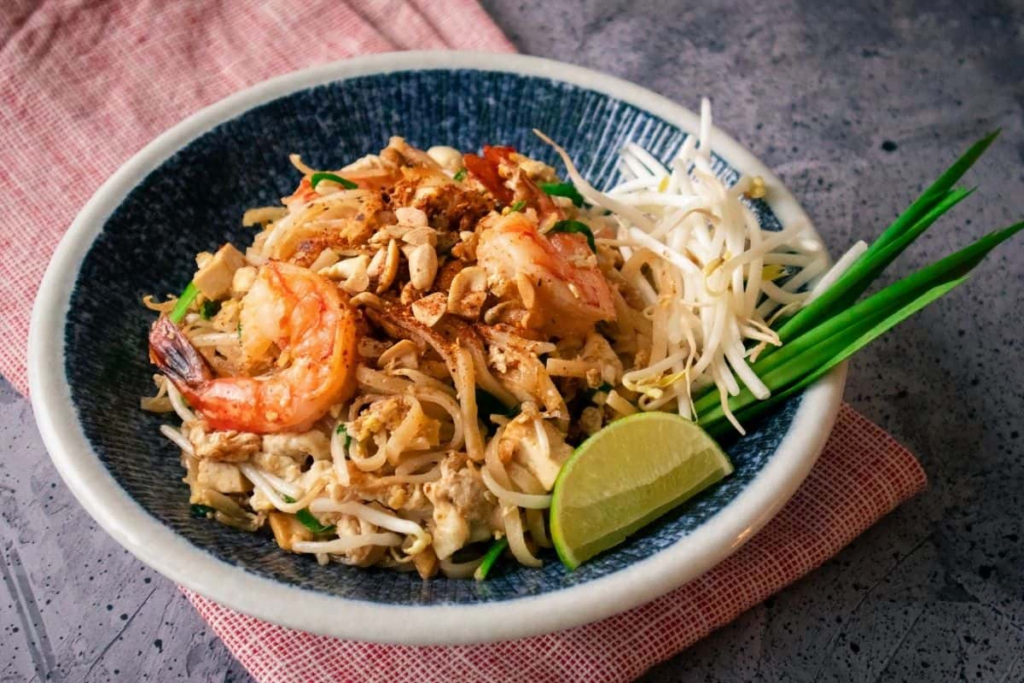
History and Background
Origins:
- Thai Pad, short for Pad Thai, originated in the street markets of Thailand, particularly in Bangkok.
- Its creation is credited to Thai Prime Minister Plaek Phibunsongkhram, who aimed to promote a national dish during World War II.
Cultural Significance:
- Pad Thai reflects Thailand’s culinary prowess, combining sweet, savory, and spicy flavors in a single dish.
- It gained international popularity and is now a symbol of Thai street food.
Ingredients
For Noodles:
- Flat rice noodles (sen lek)
- Tofu or shrimp
- Bean sprouts
- Chives
Pad Thai Sauce:
- Tamarind paste
- Fish sauce
- Palm sugar
- Red chili flakes (optional)
Additional Ingredients:
- Crushed peanuts
- Lime wedges
- Eggs
- Garlic
- Vegetable oil
Recipe
Prepare Ingredients
- Noodles: Soak rice noodles in warm water until they are pliable but still firm. Drain and set aside.
- Tofu or Shrimp: If using tofu, press and cut into small cubes. If using shrimp, peel and devein.
- Pad Thai Sauce: Mix tamarind paste, fish sauce, palm sugar, and red chili flakes in a bowl. Adjust the sweetness and spiciness according to taste.
Cooking Process
- Stir-fry Tofu or Shrimp:
- Heat vegetable oil in a wok or large pan.
- Add tofu or shrimp, cooking until tofu is golden or shrimp is pink and opaque.
- Remove from the pan and set aside.
- Cooking Noodles:
- In the same pan, add more oil if needed.
- Add minced garlic and stir until aromatic.
- Add soaked rice noodles to the pan and stir-fry.
- Create Well:
- Push noodles to the side, creating a well in the center.
- Crack eggs into the well and scramble until partially set.
- Combine Ingredients:
- Mix eggs with the noodles.
- Add the prepared Pad Thai sauce, ensuring an even coating.
- Final Touch:
- Add stir-fried tofu or shrimp back into the pan.
- Toss in bean sprouts and chives, cooking briefly until they are slightly wilted.
Step 3: Garnish and Serve
- Garnish:
- Sprinkle crushed peanuts over the Pad Thai.
- Serve with lime wedges on the side.
- Serve Warm:
- Plate the Pad Thai and serve immediately while hot.
Enjoy the delightful flavors of Thai cuisine with this homemade Pad Thai recipe. Whether you’re a novice or an experienced chef, this iconic dish will transport you to the bustling streets of Thailand with every savory bite.
Thai Food – Massaman Curry Beef
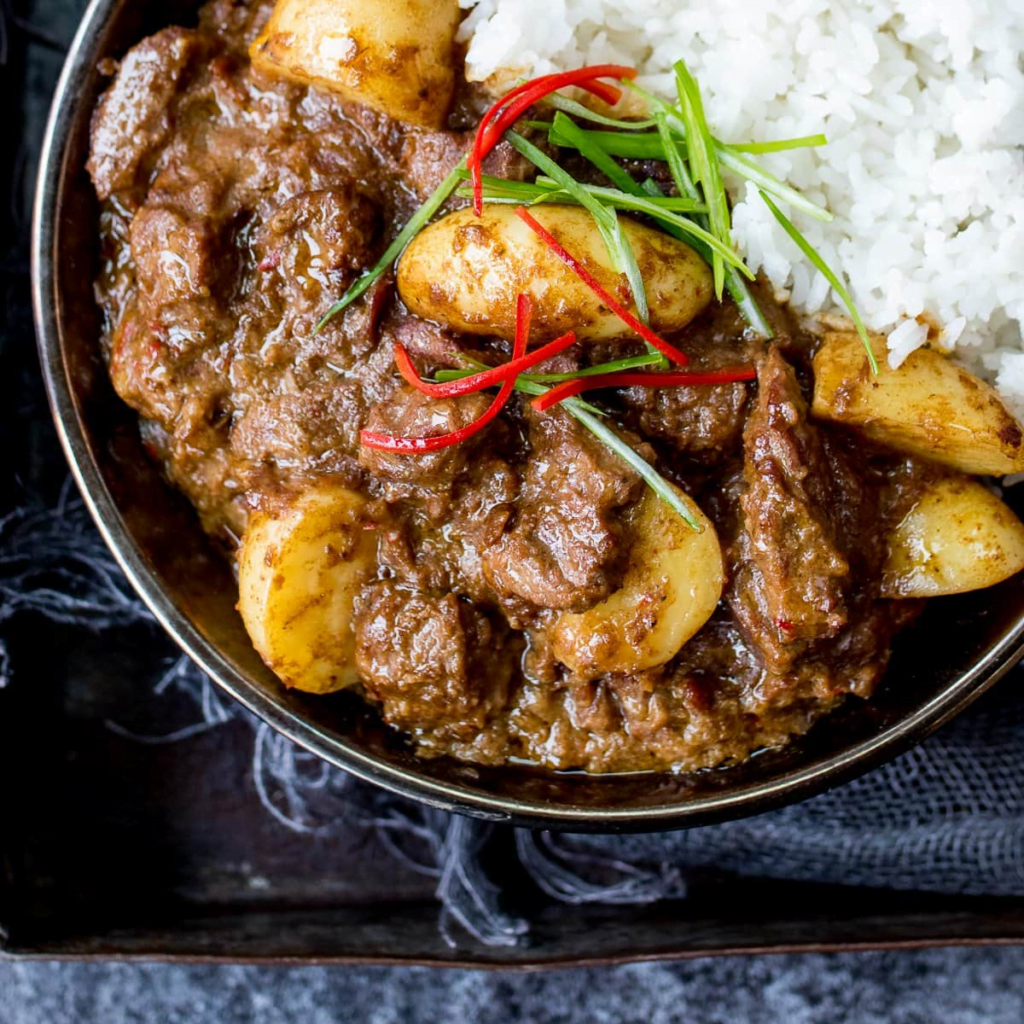
History and Background
Origins:
- Massaman Curry, known for its rich and aromatic profile, has historical ties to Southern Thailand and reflects Middle Eastern influences.
- It is believed to have been introduced to Thailand by Persian traders.
Cultural Significance:
- Often associated with Southern Thai Muslim communities and special occasions.
- The blend of spices and slow-cooking method showcases the diverse culinary influences in Thai cuisine.
Thai Food – Massaman Curry Beef Ingredients
For Curry Paste:
- Dried red chilies
- Lemongrass
- Galangal
- Shallots
- Garlic
- Coriander seeds
- Cumin
- Cardamom
- Cloves
For Curry:
- Beef, cubed
- Massaman curry paste
- Coconut milk
- Potatoes, peeled and cubed
- Onions, sliced
- Peanuts
- Tamarind paste
- Fish sauce
- Palm sugar
Thai Food – Massaman Curry Beef Recipe
Prepare Curry Paste
- Soak Dried Chilies:
- Remove seeds and soak dried red chilies in hot water until soft.
- Blend Ingredients:
- In a blender, combine soaked chilies with lemongrass, galangal, shallots, garlic, coriander seeds, cumin, cardamom, and cloves.
- Blend into a smooth paste.
Cooking Process
- Sauté Curry Paste:
- Heat a pot with vegetable oil.
- Sauté the Massaman curry paste until fragrant.
- Add Beef:
- Add cubed beef to the pot and brown on all sides.
- Pour Coconut Milk:
- Pour in coconut milk, stirring well to combine with the curry paste.
- Simmer:
- Bring the mixture to a gentle simmer over low heat.
- Add Potatoes and Onions:
- Add peeled and cubed potatoes and sliced onions to the pot.
- Allow the curry to simmer until the beef is tender and the potatoes are cooked.
- Incorporate Peanuts:
- Stir in peanuts for added texture.
Flavor Enhancement
- Tamarind Paste:
- Add tamarind paste for a hint of tanginess.
- Season with Fish Sauce and Palm Sugar:
- Season the curry with fish sauce for saltiness and palm sugar for sweetness.
- Adjust the flavors according to taste.
Garnish and Serve
- Final Simmer:
- Allow the Massaman Curry to simmer for a few more minutes to let the flavors meld.
- Garnish:
- Garnish with additional peanuts and fresh cilantro.
- Serve Warm:
- Plate the Massaman Curry Beef and serve it warm over fragrant jasmine rice.
Experience the indulgent and aromatic delight of Massaman Curry Beef, a testament to the rich history and cultural diversity embedded in Thai cuisine. This savory masterpiece invites you to savor the unique blend of spices and flavors that make Massaman Curry a true Thai culinary gem.
Thai Food – Green Curry Chicken

Origins: Green Curry Chicken, or “Gaeng Keow Wan Gai,” is a popular Thai curry that originated in Central Thailand.
Occasions: This curry is suitable for both casual family dinners and special occasions. It’s a comforting choice for any meal.
Thai Food – Green Curry Chicken Ingredients
- Chicken
- Green curry paste
- Coconut milk
- Thai eggplant
- Bamboo shoots
- Kaffir lime leaves
- Thai basil
- Fish sauce
- Palm sugar
Thai Food – Green Curry Chicken Recipe
- Sauté green curry paste in coconut milk until fragrant.
- Add chicken, Thai eggplant, bamboo shoots, and kaffir lime leaves. Simmer until the chicken is cooked.
- Season with fish sauce and palm sugar. Stir in Thai basil just before serving.
Presentation: Serve the Green Curry Chicken in a traditional Thai bowl, garnished with fresh basil leaves.
Serving Suggestion: Enjoy with steamed jasmine rice for a satisfying and aromatic meal.
Thai Food – Pad Kra Pao (Basil Chicken Stir-Fry known as Bangkok cuisine)

Bangkok Cuisine Origins
Pad Kra Pao is a popular street food dish originating in Bangkok. Bangkok cuisine is known for its bold flavors and quick preparation.
Bangkok cuisine – Pad Kra Pao Occasions
This stir-fry is perfect for a quick and flavorful weeknight dinner or lunch.
Bangkok cuisine – Pad Kra Pao Ingredients
- Chicken
- Thai bird chilies
- Garlic
- Holy basil leaves
- Soy sauce
- Oyster sauce
- Fish sauce
- Sugar
Recipe – Bangkok cuisine Pad Kra Pao
- Stir-fry chicken, Thai bird chilies, and garlic in a hot pan.
- Add holy basil leaves, soy sauce, oyster sauce, and fish sauce. Stir until the chicken is cooked.
- Sprinkle sugar for a hint of sweetness.
Presentation – Bangkok cuisine – Pad Kra Pao
Serve Pad Kra Pao on a plate, topped with a fried egg for added richness.
Serving Suggestion Bangkok cuisine – Pad Kra Pao
Pair with jasmine rice and a side of sliced cucumbers for a complete meal.
Thai Desserts – Mango Sticky Rice
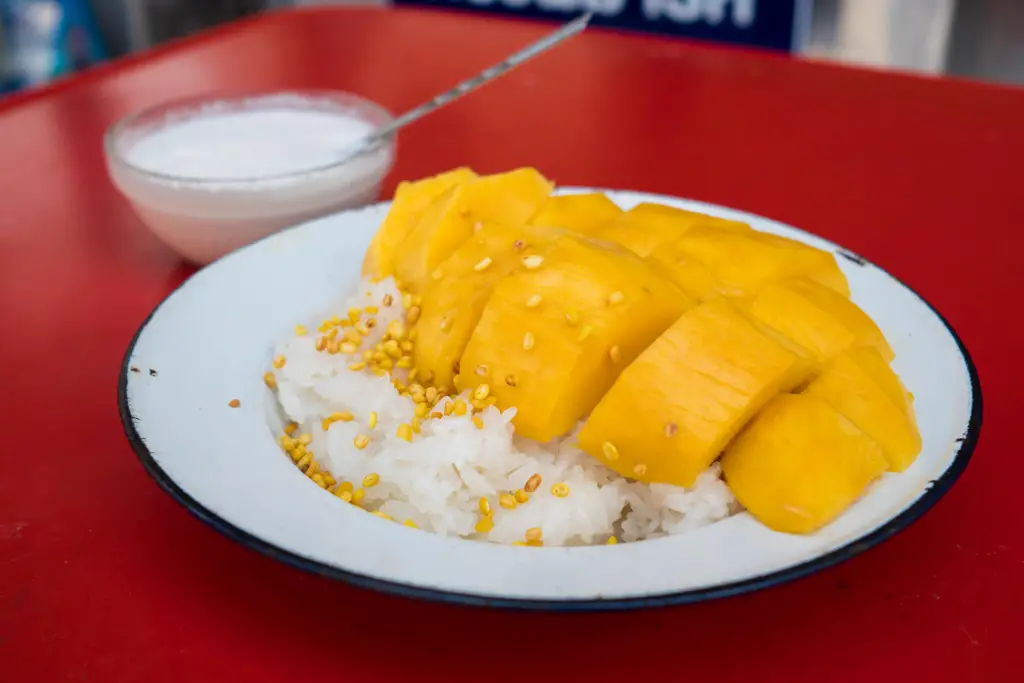
Origins of Thai Desserts – Mango Sticky Rice: Mango Sticky Rice, or “Khao Niew Mamuang,” is a popular Thai dessert that showcases the sweetness of ripe mangoes.
Occasions: This dessert is often enjoyed during the mango season and is a refreshing choice for warm days.
Thai Desserts – Mango Sticky Rice Ingredients
- Sticky rice
- Ripe mangoes
- Coconut milk
- Sugar
- Sesame seeds
Thai Desserts – Mango Sticky Rice Recipe
- Steam sticky rice until cooked. Mix with coconut milk and sugar.
- Peel and slice ripe mangoes.
- Serve sticky rice with mango slices, drizzle with coconut milk, and sprinkle sesame seeds.
Presentation: Arrange Mango Sticky Rice on a plate, creating a visually appealing display.
Serving Suggestion: Enjoy as a light and sweet conclusion to your Thai meal.
Drinks that Best Match Thai Desserts
Pair Mango Sticky Rice with a cup of Thai iced tea or a refreshing coconut water for a satisfying balance of flavors.
Conclusion
Thai cuisine is a sensory delight, offering a harmonious blend of flavors, aromas, and textures. From the street markets of Bangkok to the coastal villages, each region contributes its unique flair to the rich tapestry of Thai dishes. The diverse influences from history, geography, and traditions come together to create a culinary experience that is both vibrant and satisfying.
As you embark on your Thai culinary adventure, whether trying your hand at authentic recipes or indulging in the diverse offerings of Thai restaurants, savor the essence of Thailand’s flavors. From the spicy kick of Tom Yum Goong to the comforting aroma of Green Curry Chicken and the sweet finale of Mango Sticky Rice, every bite is a celebration of Thai culinary excellence.
So, gather your ingredients, embrace the boldness of Thai flavors, and let the spirit of Thailand’s culinary heritage come alive in your kitchen. Whether you’re a seasoned chef or an aspiring home cook, Thai cuisine invites you to explore, experiment, and enjoy the journey of creating and savoring these extraordinary dishes.
FAQ’s
What makes Thai cuisine unique?
Thai cuisine is unique for its harmonious blend of sweet, sour, salty, and spicy flavors. The use of fresh herbs, aromatic spices, and a variety of ingredients contributes to the distinctiveness of Thai dishes. Regional variations also add diversity, ensuring there’s something for every palate.
Is Thai cuisine always spicy?
While Thai cuisine is known for its spiciness, not all dishes are overwhelmingly hot. Many Thai dishes offer a balance of flavors, and the level of spiciness can often be adjusted to suit individual preferences. It’s common for condiments like chili flakes or sauces to be served on the side for diners to add as desired.
What are some common ingredients in Thai cooking?
Common ingredients in Thai cooking include lemongrass, galangal, kaffir lime leaves, Thai basil, fish sauce, coconut milk, and various types of chilies. These ingredients contribute to the vibrant and aromatic nature of Thai dishes.
Each region may also have its unique set of staples.
How is Thai street food different from restaurant dishes?
Thai street food is a culinary adventure on its own, characterized by its quick preparation, affordability, and diverse offerings. Street food stalls offer a wide range of dishes, from noodle soups to grilled meats, providing a snapshot of everyday Thai cuisine.
Restaurant dishes, on the other hand, may be more elaborate and formal, often showcasing regional specialties.
What role does rice play in Thai cuisine?
Rice is a staple in Thai cuisine and serves as the foundation for many meals. Jasmine rice, with its fragrant aroma and slightly sticky texture, is the most commonly used variety. It is often served alongside main dishes, curries, and stir-fries.
Sticky rice is another variety used in the North and Northeast regions, often enjoyed with savory or sweet accompaniments.
Are there vegetarian options in Thai cuisine?
Yes, Thai cuisine offers a variety of vegetarian options. Many traditional Thai dishes can be adapted to vegetarian preferences by substituting meat with tofu or tempeh and using vegetarian-friendly sauces.
Additionally, there are specific vegetarian dishes, such as Pad Thai with tofu or Green Curry with vegetables, that showcase the diverse and flavorful nature of Thai vegetarian cuisine.

